Aviation incidents seem to be proliferating, but experts say there's no reason for alarm
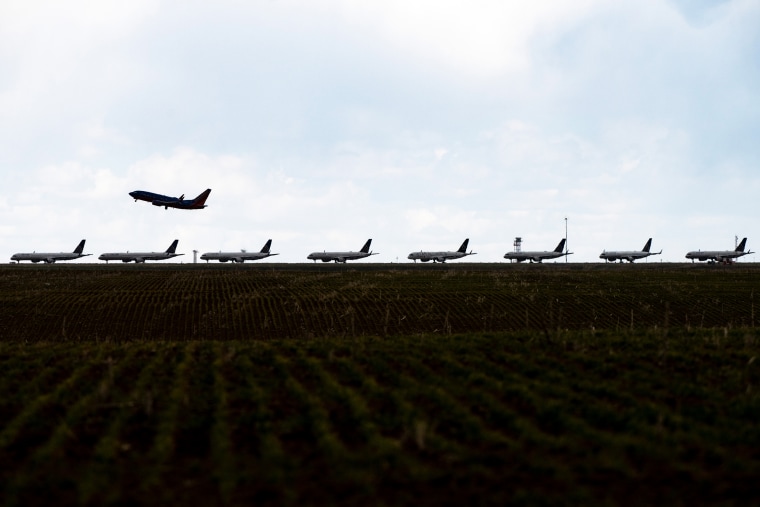
A flying tire. A runway roll-off. Multiple emergency landings.
It may seem like mishaps involving planes have been growing in frequency. But experts say there is no cause for major alarm, as the aviation industry’s safety record remains better than it’s ever been when measured by lives lost.
“This is not a safety trend,” said John Cox, a pilot and the president and CEO of Safety Operating Systems LLC, of the recent spate of high-profile incidents.
According to the aviation industry publication FlightGlobal, there were just six recorded fatal commercial aviation accidents worldwide in 2023, resulting in 115 deaths — the fewest on record.
National Transportation Safety Board data confirms the downward trend: Compared with 27 major accidents involving large U.S. carriers in 2008, there were just 20 in 2022, the most recent year for which data is available.
The rate of accidents involving injury or death to a passenger or substantial damage to a plane has also declined — from 0.141 per 100,000 flight hours to 0.112 in 2022.
In other words, the data shows flying has rarely been safer.
“There’s not anything unusual about the recent spate of incidents — these kinds of things happen every day in the industry,” said Jeff Guzzetti, a pilot and the president of Guzzetti Aviation Risk Discovery LLC.
Still, the flying public is now especially attuned to such reports — perhaps most notably because of January’s midair blowout incident on an Alaska Airlines flight involving a Boeing 737 Max 9 jet.
Among the latest high-profile events: On Friday, a United Airlines flight on a Boeing 737 Max 8 rolled off the runway in Houston while taxiing to its gate. No one was injured. United noted the plane was operating in rainy conditions at the time.
On Thursday, a tire fell off a United Airlines flight on a Boeing 777-200 that had just taken off from San Francisco, forcing an emergency landing at Los Angeles International Airport. No one was injured in that incident either. Cox told The Associated Press tire incidents are usually a maintenance issue and not linked to the manufacturer. United said the plane, built in 2002, was designed to land safely without all tires in operation.
On Monday, a United Airlines flight on a Boeing 737-900 from Houston to Fort Myers, Florida, had to make an emergency landing after flames started shooting out of the engine . United said in a statement that it appeared bubble wrap entered the airfield and was ingested by the plane’s engine.
The Federal Aviation Administration is investigating these incidents.
The NTSB also revealed this week it was investigating a United flight on a Boeing 737 Max in February that had potentially faulty rudder pedals.
In a statement, United said it is also looking at each of the incidents, though they all appear to be unique.
“Each of these events is distinct and unrelated to one another,” the airline said. “Safety is our top priority, and we’ll continue to do everything we can to keep our customers and employees safe.”
Boeing also said it was assisting with investigations of the incidents.

No likely connection to any one airline or plane manufacturer
Experts pointed out that each incident is unique and may not be related to United or Boeing. Even as he acknowledged the commonality of United and Boeing as the players in each of these incidents, Guzzetti said such cases were still fairly common in the regular course of flying.
“If you look at the big picture, there hasn’t been an increase in the number of incidents,” Guzzetti said. “There’s just a lot of scrutiny now because of the door-plug event, so you have a jittery public and the news media picking up all these things.”
Because consumers can use their phone cameras to immediately broadcast these mishaps over vast social media networks as they happen, that makes the public more aware of them, even if their frequency has not actually increased, Cox said.
Still, while experts say there is little cause for alarm, they acknowledge a crucial part of the air travel industry has changed in recent years — namely, that aviation personnel on average now have less experience than previous generations of pilots and maintenance crews.
“I think it’s a possibility that the lack of super-experienced and qualified pilots and mechanics could play a role in decreasing aviation safety,” Guzzetti said. “But it’s hard to quantify. I don’t think the decrease is alarming — you can’t quantify that — or even correlate it. But it’s worthy of consideration.”
Another factor that could be at play is newer airplanes. In fact, older planes were in some ways easier to manage because they were less technologically sophisticated, experts say.
But newer planes have more automatic or computerized features that may make flying easier for a pilot, but which are harder to deal with when something goes wrong.
“The evolution of airplanes is requiring changes in how we train pilots, where there’s a focus not only on understanding the systems of an airplane, but also managing that automation while keeping manual flying skills sharp,” said Cox.
Yet the reduced accident count is proof that, overall, these newer planes have made flying safer, he said.
Boeing and its 737 Max line of planes remain under investigation by the NTSB in the wake of the January blowout incident. Earlier this week, NTSB Chair Jennifer Homendy blasted Boeing for failing to turn over information related to its 737 Max manufacturing process; a day later, Boeing provided the names of 737 Max employees, according to Reuters.
The news wire service also reported the NTSB now plans to hold a multiple-day investigative hearing into the Max 9, likely in late summer.
CORRECTION (April 8, 2024, 10:02 p.m. ET): A previous version of this story misidentified the airplane that rolled off a Houston runway. It was a Boeing 737 Max 8, not a Boeing 737-800.
Rob Wile is a breaking business news reporter for NBC News Digital.
Simple Flying
How flying today is safer than at any time in the past.
Becoming safer with every year that passes.
It's been said that all aviation safety regulations are written in blood, but how true is that?
Every year, the International Civil Aviation Organization (ICAO) releases its global safety report. In its most recent iteration, findings showed that in 2022, the aviation industry saw a nearly 10% decrease in accidents compared to 2020—furthermore, fatalities resulting from aircraft accidents dropped by over 65%.
Interestingly, these numbers have fallen despite the number of scheduled flights increasing. The ICAO attributes the improvements in safety to the safety commitments shared across the industry. In fact - the trend across many years of aviation is that today, flying is safer than ever.
Improving safety over time
According to research by Harvard University, flying in the US, Europe, and Australia is significantly safer than driving a car. Your odds of being in an accident during a flight is one in 1.2 million, and the chance of that being fatal is one in 11 million. Comparatively, your chances of dying in a car crash are over 200,000 times higher, averaging around one in 5,000.
Harvard is far from the only US academic institution researching this topic. Indeed, a 2020 Massachusetts Institute of Technology (MIT) study tracked how airline safety has improved in recent years. Between 2008 and 2017, there was one fatality for every 7.9 million passengers who boarded a flight, while between 1998 and 2007, it stood at closer to one death per 2.7 million passengers.
Love aviation history ? Discover more of our stories here
The trend is even more apparent in the pre-9/11 era of lowered safety standards, limited security, and airport vending machines offering airline insurance. From 1988 to 1997, there was one fatality for every 1.3 million passengers, and from 1978 to 1987, that decreased further to one per 750,000 boardings. 1968 to 1977 saw an abysmal record of one fatality for every 350,000 passengers. Adjusted to 2023 traffic figures, that would account for at least 18 aviation-related deaths every day.
Arnold Barnett, the author of the MIT paper, summarized the findings, outlining the astounding work the aviation industry has done to limit fatal accidents,
“The worldwide risk of being killed had been dropping by a factor of two every decade… The pace of improvement has not slackened at all even as flying has gotten ever safer and further gains become harder to achieve. That is really quite impressive and is important for people to bear in mind.”
Different rates for different regions
Of course, within the data, geographical differences can be found. The countries where passengers will find the lowest-risk airlines include Europe, China, Japan, Canada, Australia, New Zealand, and Israel. Across these countries, the fatality rate between 2008 and 2017 was one in 33.1 million passengers. Meanwhile, the higher-risk airlines came from developing countries that typically operate older aircraft or have limited regulatory oversight, such as Southeast Asia, Africa, and Latin America.
In these locations, the overall risk was found to be one fatality per 1.2 million passenger boardings. But, even here, the safety culture had improved dramatically, from one fatality per 400,000 boardings between 1998 and 2007.
What's making aviation so much safer?
A range of factors go into making air travel the safe environment it is today, ranging from engineering overhauls to improved regulation.
Recent technological developments have significantly enhanced aviation safety. Aircraft are no longer manually flown with limited navigational equipment; modern glass cockpits boast state-of-the-art technology to limit human error .
Not too long ago, at least three engines were required to cross the Atlantic due to reliability concerns and ETOPS regulations . In 1980, Federal Aviation Administration (FAA) director J. Lynn Helms was quoted as telling Boeing's Engineering Director Dick Taylor that "it'll be a cold day in hell before I let twins fly long-haul, overwater routes," but just eight years later, ETOPS for was doubled from 90 minutes to 180, signaling a significant shift in the industry. Recent advancements in engine technology have seen the introduction of up to ETOPS-370 for Airbus' A350XWB, with many other twin-engine widebodies holding ETOPS-330 capabilities.
On the ground, flight crew, air traffic controllers, and dispatchers all work together to ensure a safe flight, and any changes to the plan are scrutinized by all parties to avoid mistakes.
When you're in the air, you can be confident you're flying with highly trained, certified individuals. In the US, pilots are required to have a minimum of 1,500 flying hours before they can work on a commercial airliner, the equivalent of nine straight weeks in the skies. Cabin crew is also vital to aircraft safety, with large portions of current training programs now related to keeping passengers safe onboard and minimizing risk during incidents .
Read More: 5 Major Air Disasters That Were Easily Preventable
The role of regulation and industry pressure
However, many of these advancements can be attributed to improvements in regulation. Everyone from aircraft manufacturer board members to part-time airline ground employees must adhere to strict governmental oversight. These regulations range from something as simple as minimizing work hours to reduce fatigue to ensuring aircraft parts are made from high-quality, approved materials.
Want answers to more key questions in aviation? Check out the rest of our guides here
The strict requirements for maintenance, reporting, training, and operations can extend further than the country in which it's implemented. Flight and airline bans, such as the European Union's Air Safety List, have prompted governments to shape up their act to ensure continued international operations and encourage tourism.
A notable recent graduate of the Air Safety list is Indonesia. Following two fatal crashes in early 2007 and a historically poor aviation safety record, all Indonesian airlines were banned from EU airspace. Gradual advancements by individual airlines saw some carriers slowly removed from the list before the ban was lifted entirely in 2018 amid consultation with the FAA and ICAO.
In a statement by the Government of Indonesia, EU Ambassador Yuri O. Tharmin noted the country's significant investment in improving its aviation industry and complying with global regulations. Tharmin added,
“The lifting of the flight ban for all Indonesian airlines is a form of EU ’ s recognition to the Indonesian Government in improving air safety in the country.”
What are your thoughts on the recent advancements in aviation safety? Let us know in the comments.
- COVID-19 travel advice
Considering travel during the pandemic? Take precautions to protect yourself from COVID-19.
A coronavirus disease 2019 (COVID-19) vaccine can prevent you from getting COVID-19 or from becoming seriously ill due to COVID-19 . But even if you're vaccinated, it's still a good idea to take precautions to protect yourself and others while traveling during the COVID-19 pandemic.
If you've had all recommended COVID-19 vaccine doses, including boosters, you're less likely to become seriously ill or spread COVID-19 . You can then travel more safely within the U.S. and internationally. But international travel can still increase your risk of getting new COVID-19 variants.
The Centers for Disease Control and Prevention (CDC) recommends that you should avoid travel until you've had all recommended COVID-19 vaccine and booster doses.
Before you travel
As you think about making travel plans, consider these questions:
- Have you been vaccinated against COVID-19 ? If you haven't, get vaccinated. If the vaccine requires two doses, wait two weeks after getting your second vaccine dose to travel. If the vaccine requires one dose, wait two weeks after getting the vaccine to travel. It takes time for your body to build protection after any vaccination.
- Have you had any booster doses? Having all recommended COVID-19 vaccine doses, including boosters, increases your protection from serious illness.
- Are you at increased risk for severe illness? Anyone can get COVID-19 . But older adults and people of any age with certain medical conditions are at increased risk for severe illness from COVID-19 .
- Do you live with someone who's at increased risk for severe illness? If you get infected while traveling, you can spread the COVID-19 virus to the people you live with when you return, even if you don't have symptoms.
- Does your home or destination have requirements or restrictions for travelers? Even if you've had all recommended vaccine doses, you must follow local, state and federal testing and travel rules.
Check local requirements, restrictions and situations
Some state, local and territorial governments have requirements, such as requiring people to wear masks, get tested, be vaccinated or stay isolated for a period of time after arrival. Before you go, check for requirements at your destination and anywhere you might stop along the way.
Keep in mind these can change often and quickly depending on local conditions. It's also important to understand that the COVID-19 situation, such as the level of spread and presence of variants, varies in each country. Check back for updates as your trip gets closer.
Travel and testing
For vaccinated people.
If you have been fully vaccinated, the CDC states that you don't need to get tested before or after your trip within the U.S. or stay home (quarantine) after you return.
If you're planning to travel internationally outside the U.S., the CDC states you don't need to get tested before your trip unless it's required at your destination. Before arriving to the U.S., you need a negative test within the last day before your arrival or a record of recovery from COVID-19 in the last three months.
After you arrive in the U.S., the CDC recommends getting tested with a viral test 3 to 5 days after your trip. If you're traveling to the U.S. and you aren't a citizen, you need to be fully vaccinated and have proof of vaccination.
You don't need to quarantine when you arrive in the U.S. But check for any symptoms. Stay at home if you develop symptoms.
For unvaccinated people
Testing before and after travel can lower the risk of spreading the virus that causes COVID-19 . If you haven't been vaccinated, the CDC recommends getting a viral test within three days before your trip. Delay travel if you're waiting for test results. Keep a copy of your results with you when you travel.
Repeat the test 3 to 5 days after your trip. Stay home for five days after travel.
If at any point you test positive for the virus that causes COVID-19 , stay home. Stay at home and away from others if you develop symptoms. Follow public health recommendations.
Stay safe when you travel
In the U.S., you must wear a face mask on planes, buses, trains and other forms of public transportation. The mask must fit snugly and cover both your mouth and nose.
Follow these steps to protect yourself and others when you travel:
- Get vaccinated.
- Keep distance between yourself and others (within about 6 feet, or 2 meters) when you're in indoor public spaces if you're not fully vaccinated. This is especially important if you have a higher risk of serious illness.
- Avoid contact with anyone who is sick or has symptoms.
- Avoid crowds and indoor places that have poor air flow (ventilation).
- Don't touch frequently touched surfaces, such as handrails, elevator buttons and kiosks. If you must touch these surfaces, use hand sanitizer or wash your hands afterward.
- Wear a face mask in indoor public spaces. The CDC recommends wearing the most protective mask possible that you'll wear regularly and that fits. If you are in an area with a high number of new COVID-19 cases, wear a mask in indoor public places and outdoors in crowded areas or when you're in close contact with people who aren't vaccinated.
- Avoid touching your eyes, nose and mouth.
- Cover coughs and sneezes.
- Wash your hands often with soap and water for at least 20 seconds.
- If soap and water aren't available, use a hand sanitizer that contains at least 60% alcohol. Cover all surfaces of your hands and rub your hands together until they feel dry.
- Don't eat or drink on public transportation. That way you can keep your mask on the whole time.
Because of the high air flow and air filter efficiency on airplanes, most viruses such as the COVID-19 virus don't spread easily on flights. Wearing masks on planes has likely helped lower the risk of getting the COVID-19 virus on flights too.
However, air travel involves spending time in security lines and airport terminals, which can bring you in close contact with other people. Getting vaccinated and wearing a mask when traveling can help protect you from COVID-19 while traveling.
The Transportation Security Administration (TSA) has increased cleaning and disinfecting of surfaces and equipment, including bins, at screening checkpoints. TSA has also made changes to the screening process:
- Travelers must wear masks during screening. However, TSA employees may ask travelers to adjust masks for identification purposes.
- Travelers should keep a distance of 6 feet apart from other travelers when possible.
- Instead of handing boarding passes to TSA officers, travelers should place passes (paper or electronic) directly on the scanner and then hold them up for inspection.
- Each traveler may have one container of hand sanitizer up to 12 ounces (about 350 milliliters) in a carry-on bag. These containers will need to be taken out for screening.
- Personal items such as keys, wallets and phones should be placed in carry-on bags instead of bins. This reduces the handling of these items during screening.
- Food items should be carried in a plastic bag and placed in a bin for screening. Separating food from carry-on bags lessens the likelihood that screeners will need to open bags for inspection.
Be sure to wash your hands with soap and water for at least 20 seconds directly before and after going through screening.
Public transportation
If you travel by bus or train and you aren't vaccinated, be aware that sitting or standing within 6 feet (2 meters) of others for a long period can put you at higher risk of getting or spreading COVID-19 . Follow the precautions described above for protecting yourself during travel.
Even if you fly, you may need transportation once you arrive at your destination. You can search car rental options and their cleaning policies on the internet. If you plan to stay at a hotel, check into shuttle service availability.
If you'll be using public transportation and you aren't vaccinated, continue physical distancing and wearing a mask after reaching your destination.
Hotels and other lodging
The hotel industry knows that travelers are concerned about COVID-19 and safety. Check any major hotel's website for information about how it's protecting guests and staff. Some best practices include:
- Enhanced cleaning procedures
- Physical distancing recommendations indoors for people who aren't vaccinated
- Mask-wearing and regular hand-washing by staff
- Mask-wearing indoors for guests in public places in areas that have high cases of COVID-19
- Vaccine recommendations for staff
- Isolation and testing guidelines for staff who've been exposed to COVID-19
- Contactless payment
- Set of rules in case a guest becomes ill, such as closing the room for cleaning and disinfecting
- Indoor air quality measures, such as regular system and air filter maintenance, and suggestions to add air cleaners that can filter viruses and bacteria from the air
Vacation rentals, too, are enhancing their cleaning procedures. They're committed to following public health guidelines, such as using masks and gloves when cleaning, and building in a waiting period between guests.
Make a packing list
When it's time to pack for your trip, grab any medications you may need on your trip and these essential safe-travel supplies:
- Alcohol-based hand sanitizer (at least 60% alcohol)
- Disinfectant wipes (at least 70% alcohol)
- Thermometer
Considerations for people at increased risk
Anyone can get very ill from the virus that causes COVID-19 . But older adults and people of any age with certain medical conditions are at increased risk for severe illness. This may include people with cancer, serious heart problems and a weakened immune system. Getting the recommended COVID-19 vaccine and booster doses can help lower your risk of being severely ill from COVID-19 .
Travel increases your chance of getting and spreading COVID-19 . If you're unvaccinated, staying home is the best way to protect yourself and others from COVID-19 . If you must travel and aren't vaccinated, talk with your health care provider and ask about any additional precautions you may need to take.
Remember safety first
Even the most detailed and organized plans may need to be set aside when someone gets ill. Stay home if you or any of your travel companions:
- Have signs or symptoms, are sick or think you have COVID-19
- Are waiting for results of a COVID-19 test
- Have been diagnosed with COVID-19
- Have had close contact with someone with COVID-19 in the past five days and you're not up to date with your COVID-19 vaccines
If you've had close contact with someone with COVID-19 , get tested after at least five days. Wait to travel until you have a negative test. Wear a mask if you travel up to 10 days after you've had close contact with someone with COVID-19 .
- How to protect yourself and others. Centers for Disease Control and Prevention. https://www.cdc.gov/coronavirus/2019-ncov/prevent-getting-sick/prevention.html. Accessed Feb. 4, 2022.
- Domestic travel during COVID-19. Centers for Disease Control and Prevention. https://www.cdc.gov/coronavirus/2019-ncov/travelers/travel-during-covid19.html. Accessed Feb. 4, 2022.
- Requirement for face masks on public transportation conveyances and at transportation hubs. Centers for Disease Control and Prevention. https://www.cdc.gov/coronavirus/2019-ncov/travelers/face-masks-public-transportation.html. Accessed Feb. 4, 2022.
- International travel. Centers for Disease Control and Prevention. https://www.cdc.gov/coronavirus/2019-ncov/travelers/international-travel/index.html. Accessed Feb. 4, 2022.
- U.S citizens, U.S. nationals, U.S. lawful permanent residents, and immigrants: Travel to and from the United States. Centers for Disease Control and Prevention. https://www.cdc.gov/coronavirus/2019-ncov/travelers/international-travel-during-covid19.html. Accessed Feb. 4, 2022.
- Non-US. citizen, non-U.S. immigrants: Air travel to the United States. Centers for Disease Control and Prevention. https://www.cdc.gov/coronavirus/2019-ncov/travelers/noncitizens-US-air-travel.html. Accessed Feb. 4, 2022.
- People with certain medical conditions. Centers for Disease Control and Prevention. https://www.cdc.gov/coronavirus/2019-ncov/need-extra-precautions/people-with-medical-conditions.html. Accessed Feb. 4, 2022.
- Stay up to date with your vaccines. Centers for Disease Control and Prevention. https://www.cdc.gov/coronavirus/2019-ncov/vaccines/stay-up-to-date.html. Accessed Feb. 4, 2022.
- Pack smart. Centers for Disease Control and Prevention. https://wwwnc.cdc.gov/travel/page/pack-smart. Accessed Feb. 4, 2022.
- Travel: Frequently asked questions. Centers for Disease Control and Prevention. https://www.cdc.gov/coronavirus/2019-ncov/travelers/faqs.html. Accessed Feb. 7, 2022.
- Coronavirus (COVID-19) information. Transportation Security Administration. https://www.tsa.gov/coronavirus. Accessed Feb. 7, 2022.
- WHO advice for international traffic in relation to the SARS-CoV-2 Omicron variant (B.1.1.529). World Health Organization. https://www.who.int/news-room/articles-detail/who-advice-for-international-traffic-in-relation-to-the-sars-cov-2-omicron-variant. Accessed Feb. 7, 2022.
- VRHP/VRMA Cleaning guidelines for COVID-19. Vacation Rental Management Association. https://www.vrma.org/page/vrhp/vrma-cleaning-guidelines-for-covid-19. Accessed Feb. 7, 2022.
- Safe stay. American Hotel & Lodging Association. https://www.ahla.com/safestay. Accessed Feb. 7, 2022.
- Khatib AN, et al. COVID-19 transmission and the safety of air travel during the pandemic: A scoping review. Current Opinion in Infectious Diseases. 2021; doi:10.1097/QCO.0000000000000771.
Products and Services
- A Book: Endemic - A Post-Pandemic Playbook
- Begin Exploring Women's Health Solutions at Mayo Clinic Store
- A Book: Future Care
- Antibiotics: Are you misusing them?
- COVID-19 and vitamin D
- Convalescent plasma therapy
- Coronavirus disease 2019 (COVID-19)
- COVID-19: How can I protect myself?
- Herd immunity and coronavirus
- COVID-19 and pets
- COVID-19 and your mental health
- COVID-19 antibody testing
- COVID-19, cold, allergies and the flu
- COVID-19 drugs: Are there any that work?
- Long-term effects of COVID-19
- COVID-19 tests
- COVID-19 in babies and children
- Coronavirus infection by race
- COVID-19 vaccine: Should I reschedule my mammogram?
- COVID-19 vaccines for kids: What you need to know
- COVID-19 vaccines
- COVID-19 variant
- COVID-19 vs. flu: Similarities and differences
- COVID-19: Who's at higher risk of serious symptoms?
- Debunking coronavirus myths
- Different COVID-19 vaccines
- Extracorporeal membrane oxygenation (ECMO)
- Fever: First aid
- Fever treatment: Quick guide to treating a fever
- Fight coronavirus (COVID-19) transmission at home
- Honey: An effective cough remedy?
- How do COVID-19 antibody tests differ from diagnostic tests?
- How to measure your respiratory rate
- How to take your pulse
- How to take your temperature
- How well do face masks protect against COVID-19?
- Is hydroxychloroquine a treatment for COVID-19?
- Loss of smell
- Mayo Clinic Minute: You're washing your hands all wrong
- Mayo Clinic Minute: How dirty are common surfaces?
- Multisystem inflammatory syndrome in children (MIS-C)
- Nausea and vomiting
- Pregnancy and COVID-19
- Safe outdoor activities during the COVID-19 pandemic
- Safety tips for attending school during COVID-19
- Sex and COVID-19
- Shortness of breath
- Thermometers: Understand the options
- Treating COVID-19 at home
- Unusual symptoms of coronavirus
- Vaccine guidance from Mayo Clinic
- Watery eyes
U.S. travel resources
- Check CDC recommendations for travel within the U.S.
- Review testing requirements for travel to the U.S.
- Look up restrictions at your destination .
- Review airport security measures .
Related resources
Make twice the impact.
Your gift can go twice as far to advance cancer research and care!
- Share full article
Advertisement
Supported by
Is It Safe to Fly During the Pandemic? Answers From the Experts
Studies suggest that flying is a relatively lower-risk activity, and millions are traveling by plane over the holidays. But the picture is not complete. Here’s what the science says about mitigating exposure.

By Tariro Mzezewa
A day after the Centers for Disease Control and Prevention urged Americans to stay home for Thanksgiving, more than one million people in the United States got on planes, marking the second day that more than a million people have flown since March. Nearly three million additional people have flown in the days since.
The high number of travelers speaks to a sense of pandemic fatigue that many people are experiencing. For some, the desire to see family is worth the risk of potentially getting the coronavirus while traveling .
But it’s important to remember that the current number of people flying, while increasing, pales in comparison to the number who still find the idea of getting on a plane frightening. In the 11-day period around Thanksgiving last year, a record 26 million people flew. This year, fewer than half that number are likely to travel.
How safe is flying? Numerous studies on that question have been published in the months since the pandemic brought travel to a halt in March. Many of them suggest that the risk of contracting coronavirus while flying is very low.
[Read our 2021 Travel questions and answers guide on restrictions, vaccination and more.]
Infectious disease, health care and aerospace engineering experts say that the studies — by the Defense Department, United Airlines, Delta Air Lines and others — are accurate, in part, but they all have limitations.
One much-publicized study on flying, conducted by the Defense Department, found that “overall exposure risk from aerosolized pathogens, like coronavirus, is very low” and concluded that a person would have to be sitting next to an infectious passenger for at least 54 hours to get an infectious dose of the virus through the air. But the “54-hour” number has since been removed from the report at the request of the authors, who worried it was being misinterpreted.
Although there has been no evidence of plane flights causing many super-spreader events, there have been cases of transmission. In September, a man flying from Dubai to New Zealand tested negative for the virus, but was, in fact, infected and passed it on to other passengers. The flight had 86 passengers and seven of them tested positive for the virus when they arrived in New Zealand, despite having worn masks and gloves. The seven passengers had been sitting within four rows of each other and the virus’s genetic sequence in six of seven of the positive passengers was identical.
In October, Irish officials, in a report in Eurosurveillance, a journal published by the European Centre for Disease Prevention and Control, said that 13 of 49 passengers on a 7½-hour flight to Ireland tested positive for the virus, and another 46 who came in contact with the passengers in Ireland became infected.
How can you make sense of the science? What are the risk points? Here’s what we know.
What do the numbers tell us?
Or, more accurately, what don’t they tell us? We know that the coronavirus has been transported by people traveling from one place to another on planes, but we don’t know exactly how many people have contracted the virus on a plane, epidemiologists and aviation experts said. In order to know how many people caught the virus on a single flight, everyone on the flight would have to be tested as soon as they got off.
“The people who are positive as soon as they got off a plane, were probably positive during their flight,” said David Freedman, an infectious disease doctor at the University of Alabama at Birmingham.
All the passengers would then need to be tested several times over a few weeks while they were isolated to ensure they didn’t get the virus after landing.
Everyone agrees airplane air is well-filtered.
Experts from various fields agree that the air on a plane cabin is filtered very well and the chances of getting the coronavirus while on a plane in flight are low. That’s because most planes have what are known as high-efficiency particulate air filters. H.E.P.A. is a designation describing filters that can trap 99.97 percent of particles that are at least 0.3 microns in size.
“Hospital-grade filtration occurs and there are standards associated with that,” said Michael Popescu, a principal aerospace aircraft systems engineer, adding that the fiberglass sheets that make up the filters on planes have diameters between half a micron and two microns.
Air is pushed through the filter and particles are trapped inside. Smaller particles are slowed down and kept from passing through the filter when they meet with molecules of gas, increasing the chances of their being trapped. Viruses like the coronavirus are smaller than the filters, but they tend to cluster on the larger droplets of moisture that get trapped.
Most planes recycle 25 to 30 percent of cabin air. The air being recycled passes through the H.E.P.A. filter which traps virus particles. The other 70 to 75 percent of air is evacuated overboard every couple of minutes, meaning there is new air in the cabin every two to five minutes, depending on the size of the plane.
“The air circulation on a plane is better than in an office building, better than your apartment because the air is changed more times per hour — most planes change several times per hour, plus it’s filtered, which isn’t the case in your office or apartment,” Dr. Freedman said.
But filtration is not enough.
Ventilation is just one piece of the puzzle, said Saskia Popescu, an infection prevention epidemiologist in Arizona. (Dr. Popescu is married to Mr. Popescu.) Distancing and masking are also important to mitigate risk, and are the other key components for keeping the coronavirus from spreading, whether on planes or elsewhere.
Earlier in the year, when it first became known that social distancing could mitigate chances of getting the coronavirus, many airlines began leaving middle seats open to create more space between passengers. In recent months, however, many airlines have reversed their policies and begun seating people in all seats and saying that they are mandating mask-wearing policies, which will keep passengers safe.
Researchers said that airlines should be enforcing both social distancing policies — like leaving middle seats open — and mask wearing. Having fewer people on a plane means that there’s less of a risk of people coming into contact with someone who has the virus, said Qingyan Chen, a professor at Purdue University School’s of Mechanical Engineering . “Having fewer people on the plane is key,” he said. “Fewer passengers means fewer patients and by keeping the middle seat open airlines might remove 40 percent of the risk.”
A study done by scientists at the Harvard T.H. Chan School of Public Health said that “when a plane exceeds 60 percent load factors (percent of seats occupied), it is no longer possible to rely on physical distancing alone to mitigate the risk of virus transmission.”
Dr. Freedman and Dr. Chen emphasized that people should not be flying with homemade masks, bandannas or neck gaiters.
“For the purposes of flying, people should be wearing proper surgical/medical grade masks — the ones you can buy in boxes of 50 at a time,” Dr. Freedman said, adding that it would be wise for airlines to make it standard practice to hand out surgical masks to travelers.
And flying isn’t just sitting on a plane.
Many studies focus on the in-air cabin experience, not the parts of traveling that involve interaction with other people, often in proximity. The Harvard study focused on the three phases of air travel : boarding, cruising and deplaning.
“Each of these segments involves unique activities, such as storing and retrieving luggage, using seat trays while eating, using entertainment systems, standing in the aisle and using the lavatory,” the study’s authors wrote.
When a plane is on the ground, its air supply can come from a number of places. That air is then mixed and distributed to the cabin. One source is from the airplane auxiliary power unit, or A.P.U., with the plane’s engine in operation. That process uses fuel and can cause noise and emissions at the airport. Air supply can also come from an airport ground source like the jet-bridge that’s known as pre-conditioned air, or P.C.A. That means air is not being circulated at the usual rate. Researchers suggest that airlines should use air from the A.P.U. for improved filtration.
“This is important since, during that time, people are exerting themselves resulting in increased respiratory levels for a brief period, raising the potential for infectious aerosols to be exhaled into the cabin,” the Harvard study notes.
Researchers also suggest that people bring smaller and fewer bags onboard, which would cut down on their exertion and reduce encounters with other travelers also putting things in the overhead bins.
Over the summer, Michael Schultz, an engineer at Dresden University’s Institute of Logistics and Aviation in Germany, and Jörg Fuchte, a senior specialist, at the German aerospace company Diehl Aviation found that the amount and type of hand luggage people brought onto the plane as carry-ons affected how long everyone was standing in line and the number of close contacts. They concluded that by reducing hand luggage, the number of close contacts encountered would be reduced by two-thirds.
The deplaning process tends to be smoother than boarding, since people naturally move in order of rows, so travelers don’t have as much to worry about. The jetway, however, can be an area of risk if too many people are allowed on without appropriate distancing, several experts said. Travelers should remain distanced from others during this process, they said, and the plane’s ventilation systems should remain on.
“The deplaning process can be enhanced by having passengers remain in their seats until directed to leave by a crew member,” the Harvard researchers suggest.
Eating and using the bathroom pose risks
Like in the cabin, air in a plane’s bathrooms is continually changed. Toilets on planes use a vacuum system to move waste to the holding tank from the toilet, so when you flush, air is pulled in through the vacuum.
“Airplane bathrooms are particularly dangerous for two reasons,” said Dr. Chen. First, he said, is the fact that you may touch surfaces that an infected passenger has just touched. “The second thing is that human waste like stool and urine contain Covid-19 and when you flush the toilet it will cause some particles to escape,” he went on. “The smaller particles carry over and could enter the air. If I have Covid-19 and use the toilet and flush and someone else comes in immediately after, that’s a risk. So far we have no evidence of people getting sick like that, but according to our models we found that this is possible.” (Over the summer this became known as “ toilet plume. ”)
For those reasons, experts suggest waiting 30 seconds or longer before going into a bathroom that someone else has just exited and using a tissue or paper towel so you aren’t touching surfaces like door knobs and faucets with bare hands.
Dr. Chen also suggests that airlines stagger eating times so everyone isn’t unmasked at the same time.
“Airlines serve food to everyone and the same time and it’s very bad because it means everyone is taking off their masks at the same time and all the particles are in the air then,” he said.
Your actions off the plane matter too.
Dr. Chen also pointed to the fact that people likely have more to worry about before getting on the plane, when they are in the terminal, going through security or sitting in airport restaurants and bars.
Others agreed. “In hospitals, people think patient interaction is highest risk, so they take a break unmasked or do charting unmasked or when they’re chatting with colleagues they take off a mask, and that’s similar to how people perceive risk in airports,” Dr. Saskia Popescu said.
“People think the plane is the riskiest, so they’ll get food and a drink at a restaurant or bar in the airport with their mask off, but that’s risky.”
Follow New York Times Travel on Instagram , Twitter and Facebook . And sign up for our weekly Travel Dispatch newsletter to receive expert tips on traveling smarter and inspiration for your next vacation.
Tariro Mzezewa is a national correspondent covering the American South. More about Tariro Mzezewa
Suggestions or feedback?
MIT News | Massachusetts Institute of Technology
- Machine learning
- Social justice
- Black holes
- Classes and programs
Departments
- Aeronautics and Astronautics
- Brain and Cognitive Sciences
- Architecture
- Political Science
- Mechanical Engineering
Centers, Labs, & Programs
- Abdul Latif Jameel Poverty Action Lab (J-PAL)
- Picower Institute for Learning and Memory
- Lincoln Laboratory
- School of Architecture + Planning
- School of Engineering
- School of Humanities, Arts, and Social Sciences
- Sloan School of Management
- School of Science
- MIT Schwarzman College of Computing
Friendly skies? Study charts Covid-19 odds for plane flights
Press contact :, media download.
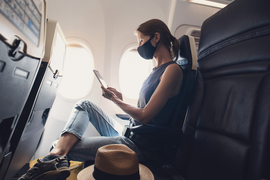
*Terms of Use:
Images for download on the MIT News office website are made available to non-commercial entities, press and the general public under a Creative Commons Attribution Non-Commercial No Derivatives license . You may not alter the images provided, other than to crop them to size. A credit line must be used when reproducing images; if one is not provided below, credit the images to "MIT."
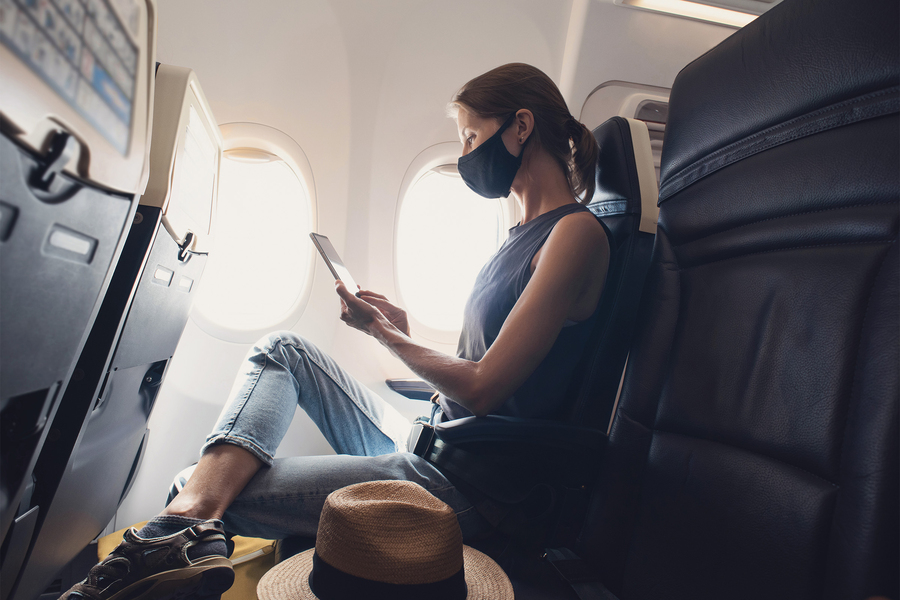
Previous image Next image
What are the chances you will contract Covid-19 on a plane flight? A study led by MIT scholars offers a calculation of that for the period from June 2020 through February 2021. While the conditions that applied at that stage of the Covid-19 pandemic differ from those of today, the study offers a method that could be adapted as the pandemic evolves.
The study estimates that from mid-2020 through early 2021, the probability of getting Covid-19 on an airplane surpassed 1 in 1,000 on a totally full flight lasting two hours at the height of the early pandemic, roughly December 2020 and January 2021. It dropped to about 1 in 6,000 on a half-full two-hour flight when the pandemic was at its least severe, in the summer of 2020. The overall risk of transmission from June 2020 through February 2021 was about 1 in 2,000, with a mean of 1 in 1,400 and a median of 1 in 2,250.
To be clear, current conditions differ from the study’s setting. Masks are no longer required for U.S. domestic passengers; in the study’s time period, airlines were commonly leaving middle seats open, which they are no longer doing; and newer Covid-19 variants are more contagious than the virus was during the study period. While those factors may increase the current risk, most people have received Covid-19 vaccinations since February 2021, which could serve to lower today’s risk — though the precise impact of those vaccines against new variants is uncertain.
Still, the study does provide a general estimate about air travel safety with regard to Covid-19 transmission, and a methodology that can be applied to future studies. Some U.S. carriers at the time stated that onboard transmission was “virtually nonexistent” and “nearly nonexistent,” but as the research shows, there was a discernible risk. On the other hand, passengers were not exactly facing coin-flip odds of catching the virus in flight, either.
“The aim is to set out the facts,” says Arnold Barnett, a management professor at MIT and aviation risk expert, who is co-author of a recent paper detailing the study’s results. “Some people might say, ‘Oh, that doesn’t sound like very much.’ But if we at least tell people what the risk is, they can make judgments.”
As Barnett also observes, a round-trip flight with a change of planes and two two-hour segments in each direction counts as four flights in this accounting, so a 1 in 1,000 probability, per flight, would lead to approximately a 1 in 250 chance for such a trip as a whole.
All told, given about 204 million U.S. domestic airline passengers from June 2020 through February 2021, the researchers estimate that about 100,000 cases of Covid-19 were transmitted on flights during that time.
The paper, “ Covid-19 infection risk on U.S. domestic airlines ,” appears in advance online form this month in the journal Health Care Management Science . The authors are Barnett, who is the George Eastman Professor of Management Science in the MIT Sloan School of Management; and Keith Fleming, a student from MIT Sloan’s master’s program in business analytics.
Barnett is a longtime expert in airline safety who has analyzed the long-term reduction in aviation crashes in recent decades, among other topics. The current study about transmission of the Covid-19 virus was spurred by an airline policy change from early in the pandemic — Delta Air Lines started leaving open the middle seats on domestic flights, in order to de-densify its planes, a practice that some other airlines followed for a while. (Delta and all other airlines are no longer using this policy.)
To conduct the study, Barnett and Fleming amalgamated public health statistics about Covid-19 prevalence, data from peer-reviewed studies about Covid-19 contagion mechanisms, data about the spread of viruses on airlines generally and the spread of Covid-19 on international airlines, and some available industry data about seat-occupancy rates on U.S. domestic jet flights. They then estimated transmission risks on U.S. domestic airlines through extensive modeling.
The researchers used a two-hour flight for their estimates because that is about the average duration of a domestic flight in the U.S. As their airplane settings, the scholars used a Boeing 737 and Airbus A320, workhorse planes in the U.S. with a single aisle, three seats on either side, and typical capacities of about 175 passengers. Most such planes do have high-functioning HEPA air-purification systems, which help reduce the transmission risk of airborne illnesses.
Using the prevalence of Covid-19 in the U.S. as a starting point, and integrating airborne transmission data, Barnett and Fleming modeled what would likely happen on flights filled with a wide variety of passenger loads. The modeling includes a series of adjustments to make the passenger profile as realistic as possible. For instance, airline passengers are a bit more affluent than the U.S. population as a whole, and Covid-19 has affected more affluent populations slightly less than other social groups, so those things are quantified in the study, among other factors.
Ultimately Barnett and Fleming did find a notable dropoff in transmission risk when planes have fewer people on them — whether having fewer passengers is due to lack of demand, or because airlines were leaving middle seats open. While it is true that leaving middle seats open does not eliminate all proximity with all other passengers, it does reduce the extent of close proximity with others, and thus appears to lower the overall transmission risk.
“The [medical] literature suggests the proximity matters,” Barnett says.
As Barnett readily notes, pandemic circumstances and airline policies keep evolving, meaning that their estimates for the 2020-2021 period in the study may not translate precisely to the summer of 2022. Even despite the availability of vaccines, he believes the reduced amount of masking, the more-crowded flights, and easy transmissibility of current variants all mean that risks could have increased.
“If we were to do an estimate of the chances of infection now, it could be considerably higher,” Barnett says.
Still, he adds, the approach used in this paper could readily be adapted to updated studies about in-flight transmission risks, for Covid-19 or other viruses.
“Modeling like that presented here could help in assessing the changed situation, much as the general approach might help in connection with a future pandemic,” Barnett and Fleming write in the paper.
Open access funding making the paper free for readers was provided by MIT Libraries.
Share this news article on:
Related links.
- Arnold Barnett
- Operations Research and Statistics at MIT Sloan
- MIT Sloan School of Management
Related Topics
- Public health
- Transportation
Related Articles

Study: With masking and distancing in place, NFL stadium openings in 2020 had no impact on local Covid-19 infections
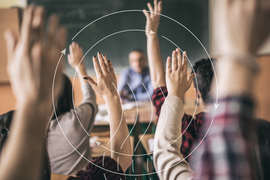
Study provides suggestions for keeping classroom air fresh

A method to assess Covid-19 transmission risks in indoor settings
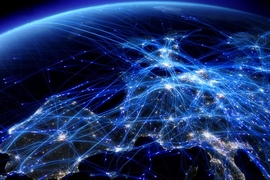
Study: Commercial air travel is safer than ever
Previous item Next item
More MIT News

Now corporate boards have responsibility for cybersecurity, too
Read full story →
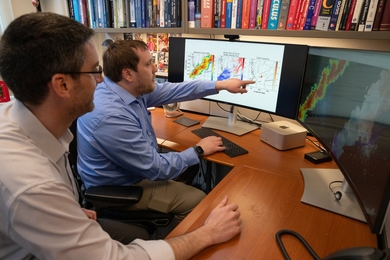
An AI dataset carves new paths to tornado detection

MIT faculty, instructors, students experiment with generative AI in teaching and learning
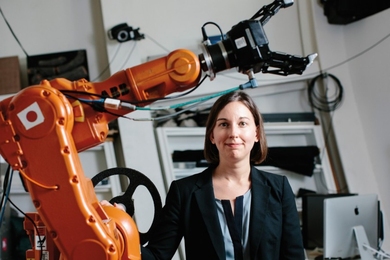
Julie Shah named head of the Department of Aeronautics and Astronautics

Remembering Chasity Nunez, a shining star at MIT Health

Exploring the history of data-driven arguments in public life
- More news on MIT News homepage →
Massachusetts Institute of Technology 77 Massachusetts Avenue, Cambridge, MA, USA
- Map (opens in new window)
- Events (opens in new window)
- People (opens in new window)
- Careers (opens in new window)
- Accessibility
- Social Media Hub
- MIT on Facebook
- MIT on YouTube
- MIT on Instagram
Protect Your Trip »
Why Air Travel Is Actually Much Safer Than You Think
Major technological advancements and improved protocols have helped enhance flight safety.

Getty Images
Flying is one of the safest forms of transportation – believe it or not.
In spite of a series of high-profile incidents making headlines since 2014 – from the AirAsia Flight 8501 tragedy to the disappearance of Malaysia Airlines Flight 370 – air travel safety is improving. According to the International Air Transport Association, in 2015 only 1 in 3.1 million global flights resulted in an airline accident, a 30 percent decrease from flights assessed from 2010-14 . "We see a continuing improvement in safety performance over time," says Rudy Quevedo, the director of safety for IATA. And significant shifts in airplane design and technology since the '70s and '80s, along with heightened regulations and training standards, are fueling the decline in airline accidents. Here's a primer on the major advancements that have helped make flying one of the safest ways you can get from point A to point B.
[See: 8 Airports With Amenities That Will Make You Look Forward to Flying .]
Improved Design
Beyond rolling out free in-flight entertainment systems and increased premium economy-class seating options , airlines are taking great strides to enhance their technology and equipment. To continually improve safety over time, "aircraft manufacturers and their partners study accidents and learn what went wrong," explains Henry Harteveldt, a travel industry analyst for Atmosphere Research Group. Nowadays, planes are better designed and constructed with improved engines, translating to heightened reliability and fewer failures, he explains. Aircrafts are built with multiple redundant backup systems, with two or three built-in systems to control the engine if something isn't operating correctly. And though human error can occur, such as neglecting to follow a checklist or failing to correctly calibrate an instrument, "in some cases, automation can compensate," he adds. "As airplanes are designed and built, they are tested literally to the point of destruction" Harteveldt says, noting that engineers are going to great lengths to improve the margin of safety.
Flight Fear Is Common, But It's Not Grounded in Plane Crashes
Despite technological advancements decreasing the number of accident-related events, more than 6 million Americans suffer from a fear of flying identified as aviophobia or an anxiety order, according to the National Institute of Mental Health. In reality, "flying is a confluence of fears," says Dr. Martin Seif, a clinical psychologist. But with an endless cycle of terrifying airplane crash coverage on the news, "people are kind of vicariously traumatized," Seif explains. By seeing these tragedies dominate the news cycle, people imagine themselves in that terrifying situation. Thirty people on the same flight could each have a different fear, such as a fear of heights or a social anxiety. "We look for reasons to hang our fear on," Seif says. "Once you're afraid, it's too dissonant not to be afraid without a reason," he explains. You likely recognize that, statistically, it's safer to fly than to drive. But for someone with flight anxiety, it's easy to disregard how unlikely something like the Malaysia flight crash is, he says.
Still, there have been few U.S. airline accidents since Sept. 11, 2001. "In Europe, the Germanwings crash and Air France 447 still trigger anxiety," explains captain Tom Bunn, a former commercial pilot who is now a licensed therapist and helps fliers overcome flight anxiety. "Though the cause of these crashes had been remedied, anxious fliers say since these tragedies were unforeseen, other dangers must be lurking." But Bunn says the industry is proactively mitigating such accidents. "When Boeing was designing the 777, engineer Todd Curtis, Ph.D., led a team to think of everything that could possibly go wrong. After listing every risk, he directed another team to develop a way to get the plane safely on the ground in every case," he says. And with few airplane-related incidents reported for the 777 and 787 models, Curtis did his job well, he adds.
[See: 10 Frequent Flier Secrets Every Traveler Should Know .]
New Pilot Protocols
In the aftermath of tragic events, the Federal Aviation Administration put into effect new rules in 2014 that limit the hours pilots spend in the cockpit to ensure they receive enough rest prior to flights and reduce fatigue-associated incidents. The rules require that pilots get a 10-hour minimum break prior to flight duty, with eight of those hours devoted to undisturbed sleep. The rules also mandate that pilots are restricted to flying eight or nine consecutive hours, according to their shift times.
These days, airplanes are also equipped with locked cockpit doors. The "rule of two," which was introduced in the aftermath of Sept. 11, mandates two pilots be in an airliner cockpit at all times. Plus, airplanes offer cockpit resource management, Harteveldt adds, meaning that if either pilot believes the other is doing something incorrectly, he or she can challenge their co-pilot. For example, if a captain senses the first officer is under the influence of alcohol, the pilot has the right to demand that the other pilot take a breathalyzer, he explains. "We can't overlook the people who fly," Harteveldt adds. With heightened FAA standards, flight training has also improved and simulators for training have become more realistic, he says.
Satellite Technology and Air Traffic Control Enhancements
"With rapid industry growth, you're seeing a large influx of new technology," Quevedo says. A variety of components, including satellite global positioning technology and air traffic control systems, have bolstered flight safety, he explains. Quevedo notes that positioning technology, which allows pilots to easily layout their routes and dodge inclement weather, also helps with traffic, increasing efficiency and safety.
Harteveldt points out that in addition to investments for flight navigation systems and improved satellite positioning avionics, there's been a growing investment in air traffic control, which has played a key role in boosting safety. Thanks to airports investing in ground navigation systems to enhance their infrastructure, pilots and air traffic controllers have a better awareness of other planes and can more easily prevent accidents while taxiing, he explains.
[See: 8 Ways You're Irritating People at the Airport .]
Heightened Industry Awareness and Resources
The integration of data-driven programs to boost safety and a focus on proactively targeting safety management has triggered a greater awareness in the airline industry, Quevedo says. There's been more collaboration between the industry and IATA as well as other organizations to improve safety and ensure standards in place are adequate, he says, pointing to the IATA Operational Safety Audit, which develops and executes standardized practices to enhance safety.
Aside from these measures, airlines have funneled in more money to aircraft maintenance, Harteveldt explains. "Even though airlines are always looking for ways to save money, maintenance is one of the sacred areas," he says. "Safety is job one." More changes, such as giving flight attendants additional rest and providing pilots with a heads-up display to easily view important data like air speed without looking away from the airplane's windshield will continue to help bolster air travel safety, he says. Overall "it has gotten better. It's not perfect," he says.
Tags: Airlines , Travel
World's Best Places To Visit
- # 1 South Island, New Zealand
- # 4 Bora Bora
If you make a purchase from our site, we may earn a commission. This does not affect the quality or independence of our editorial content.
You May Also Like
12 cheap fourth of july getaways.
April 29, 2024

The Best Tours of Buckingham Palace
Laura French April 29, 2024

Flight Canceled or Delayed? What to Do
Amanda Norcross April 26, 2024

The Best Beach Hats
Megan Johnson and Sharael Kolberg April 26, 2024

The Best Florence Tours
John Rodwan April 25, 2024

The 9 Best Louisiana Swamp Tours of 2024
John Rodwan April 24, 2024

How Much Does a Cruise Cost?
Gwen Pratesi April 24, 2024

The Best Whale Watching in Cape Cod
Lyn Mettler April 24, 2024

Best Whale Watching Tours in Maine
Marisa Méndez April 23, 2024

The Best Wineries in Napa Valley
April 23, 2024

Donna Kelce shared her Mother’s Day wish list – and we want everything
- TODAY Plaza
- Share this —

- Watch Full Episodes
- Read With Jenna
- Inspirational
- Relationships
- TODAY Table
- Newsletters
- Start TODAY
- Shop TODAY Awards
- Citi Concert Series
- Listen All Day
Follow today
More Brands
- On The Show
Is it safe to fly right now? What to know about air travel and COVID-19
Airports are preparing for a crush of passengers as holiday air travel in 2021 is expected to approach pre-pandemic levels.
More than 6 million people are expected to fly between Dec. 23 and Jan. 2., with airlines projected to see a 184% increase in passengers from 2020, according to AAA , which called it a "dramatic bounce-back."
"With vaccines widely available, conditions are much different and many people feel a greater level of comfort with travel," said Paula Twidale, senior vice president of AAA Travel, in a statement.
Holiday bookings for Christmas and the New Year's holiday have been coming in "very, very strong," Ed Bastian, the CEO of Delta Air Lines, told CNBC. United has been flying its largest schedule since the start of the pandemic, adding more than 200 daily domestic flights to meet the increased demand.
More than 2 million people passed through Transportation Security Administration checkpoints on Dec. 16, 2021 — more than double the passenger volume on the same day in 2020.
But the rapid spread of the omicron variant may have many people wondering: Is it safe to fly right now?
'Very low' risk
There's not a one-size-fits-all answer to that question — it all depends on a person's risk tolerance and their own risk factors for severe disease, said Dr. Amesh Adalja, a senior scholar at the Johns Hopkins University Center for Health Security in Baltimore and a spokesman for the Infectious Diseases Society of America.
Masks are required on planes and at airports, and as long as people are complying, there's not a major risk from flying, he noted.
"Transmission on a plane of COVID-19 is not very common because of the (air) circulation and because of the mask wearing," Adalja told TODAY.
"(But) there's always going to be some level of COVID risk with any activity you do, whether it's flying, riding the bus or going to the post office... for most people, I think it's an acceptable risk."

Health & Wellness CDC panel recommends people not get J&J vaccine if Pfizer, Moderna available
The more vaccinated passengers and crew are on a plane, the safer air travel is, Adalja added, so he was a fan of airlines mandating vaccinations as a condition of employment, the way United Airlines has .
Masking and vaccines are the best tools we have against both the omicron and delta variants, he said.
The Centers for Disease Control and Prevention urged people to delay travel until they were fully vaccinated. If that's not possible, they should get tested one to three days before their trip.
Given the high quality of cabin air and the various safety measures in place, there is "very low" risk of contracting COVID-19 on board a plane, according to the International Air Transport Association , which represents airlines around the world.
What studies have found:
United Airlines and the Department of Defense teamed up on a six-month study that found the risk of contracting COVID-19 on commercial flights was low when passengers wore masks for the entirety of the flight. The highest risk was associated with sitting in the same row, or a row in front of or behind, an infected person. This study didn't take into account the risk associated with being in a crowded airport or boarding a flight.
Researchers have said factors that may prevent transmission on planes include the airflow in the cabin from the ceiling to the floor and all passengers wearing face coverings.
But if everyone took off their masks at the same time for a one-hour in-flight meal service, the average infection probability increased by 59%, a study published in the Journal of Travel Medicine in May 2021 found.

Health & Wellness Current COVID-19 boosters are enough to fight the omicron variant, Fauci says
Still, most viruses don’t spread easily on flights because of how air circulates and is filtered on planes, the CDC noted.
Carriers like American Airlines have been touting the use of high-efficiency particulate air (HEPA) filters on board that capture “at least 99.97% of airborne microbes by circulating the cabin air once every 2 to 4 minutes.”
Airlines have also implemented enhanced cleanings and traveler health acknowledgments during check-in.
A paper by Arnold Barnett, a statistics professor at the MIT Sloan School of Management in Cambridge, Massachusetts, looked at the probability of an air traveler contracting COVID-19 from a nearby passenger while sitting in economy class on a two-hour domestic U.S. flight. He assumed everyone was wearing masks.
Barnett calculated the risk at 1 in 4,300 for full flights, which went down to 1 in 7,700 when middle seats were kept empty.
It's not clear that two hours spent on a plane involved a higher COVID-19 infection risk than two hours doing any other everyday activities during the pandemic, Barnett concluded in the study.
"You don't get sick on airplanes any more than anywhere else," wrote Joseph Allen, an assistant professor of exposure assessment science at Harvard T.H. Chan School of Public Health in Boston, in The Washington Post . "The required aircraft systems do a really good job of controlling airborne bacteria and viruses."
Danger on the ground
Experts have been more worried about coronavirus spread before flights.
“My concern has really been in the airports funneling people through hallways and jet ways and metal detectors,” said Dr. Michael Mina, an epidemiologist at Harvard T. H. Chan School of Public Health, during a briefing in 2020. “The whole process of airports… and squishing people together. We know that this virus can be airborne and it can linger for a little bit.”
Any part of the trip where you can’t social distance is more risky since the virus transmits most efficiently when people are in close contact together, including at the airport food court and standing at the gate before boarding, Adalja added. He also believed people’s behavior at the destination was usually riskier than the journey itself.

Health & Wellness Free at-home COVID-19 tests are coming: How to get reimbursed by health insurance
If you plan to fly soon, Adalja recommended taking all the usual precautions during the trip: Wash your hands frequently, wear a face covering as required, avoid the crowded parts of the airport and try to stay 6 feet apart from everybody. Always have hand sanitizer with you.
Some studies have found the window seat may be best to avoid getting sick because it offers the least contact with other passengers, but Adalja was skeptical. It all depends on who's sitting beside you since it’s usually 10-15 minutes of close proximity — not fleeting contact — that transmits the new coronavirus virus, he said.
If you’re more likely to get the severe form of COVID-19, consider if it's worth the risk to fly. Don't fly if you're sick or have been in contact with someone who is sick. These are all important things to keep in mind during the holiday travel season.
This article was updated in December 2021 to include the most recent research and statistics.
A. Pawlowski is a TODAY health reporter focusing on health news and features. Previously, she was a writer, producer and editor at CNN.
Call Toll Free: 800-843-8289 International: 954-581-6022 Skype : Sheffield.School
- Dispatcher Resource Center
- Choose the Best School
- Dispatcher International Students Are Welcome!
- Prior Aviation Experience/Training Form
- The Operations Control Center
- Video Library
- Request Catalog
- Aircraft Dispatcher Course – 5 Week Course
- Aircraft Dispatcher Course – 3 Week Course
- Aircraft Dispatcher Course – 2 Week Course
- Distance Learning + 5
- Recurrent Training – NEW!
- AIFP – Advanced International Flight Planning
- ETOPS – Extended Operations
- Advanced Weather Forecasting & EWINS
- Cost Comparison
- Course Registration Forms (Applications)
- Payment Page
- Course Calendar
- Airlines trained by Sheffield
- School Tour
- Online School Catalog
- Travel Information
- Student Housing
- Class Photos
- Staff Page + Bios
- Course Evaluation Testimonials
- Airline Testimonials
- Featured Testimonials
Why Air Travel is The Safest Mode of Transportation?
Is flying that safe? Any certified aircraft dispatcher who has been through rigorous aircraft dispatcher training and tests will tell you, yes, it most certainly is. And here’s why.
Flying is the safest way to travel; that’s a platitude that almost everyone is familiar with. In the 1990’s, when air travel was becoming increasingly common, even more so than it had ever been, this idea that air travel is safe spread more and more. It was likely an idea that spread because more first-time fliers found themselves slightly panicking, so they needed a way to ensure that they are safer than in car on the road.
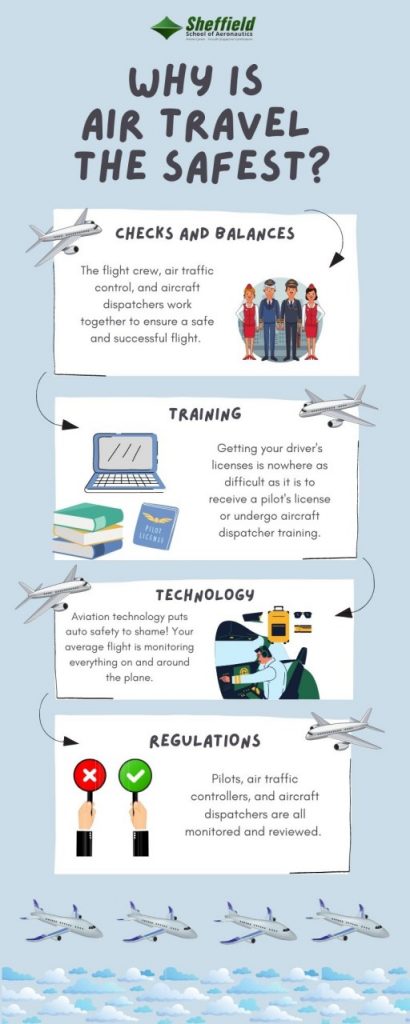
There are divisions that make up every successful flight that you have ever taken. Flight crew, air traffic control, and aircraft dispatchers.
Each department relies on and monitors the other. Aircraft dispatchers are often called the 4 th flight crew member (after the pilot, first officer, and navigator). Aircraft dispatchers and pilots share an equal amount of responsibility for the safety of every flight.
For example, changing course or altitude must go through all three departments so mistakes are found and adjustments can be made before they happen.
Training and Certifications
Did you have a tough time getting your driver’s license? It was nowhere near as difficult as it is to receive a pilot’s license or go through aircraft dispatcher training.
Aircraft dispatcher training may be short, but it is vigorous, and the tests taken to become a certified aircraft dispatcher are by no means easy.
There’s no short cut for experience. It’s one thing to complete aircraft dispatcher training and become a certified aircraft dispatcher , but it takes years to land a job at a major airline.
Pilots must have 1,500 flying hours before they are eligible to work as a first officer on a commercial airline.
Aviation technology is advancing to incredible levels. The latest Airbus and Boeing models are built with so many safety features, it would put any Volvo or Toyota to shame.
The technology on your average flight is monitoring everything that’s happening on the plane, everything that’s happening around the plane, and everything that’s happening in all other 50 dimensions in time and space.
Airline Authorities and Regulations
Imagine having a machine monitor and record all your driving, which was then reviewed by a traffic officer once you’ve reached your destination. Be honest, you would probably have at least three or four tickets by the end of the week.
Pilots, air traffic controllers, and aircraft dispatchers are all monitored and reviewed. And believe us, the Federal Aviation Association is no slouch. They will lay down the law for anything not done according to regulations and training.
Certified aircraft dispatchers are also inundated with rules and regulations. It’s what we do, it’s what we love, and it’s what makes the skies a lot safer.
Though flight fear still exists, it is almost completely unfounded. Accidents tend to be highlighted by the media, blowing them out of proportion.
Air travel resulted in 0.07 deaths for every 1 billion miles travelled compared to 212.57 for motorcycles and 7.28 for cars. We will continue to make the skies safer and you continue to fly!
Why Airplanes Are Safer Than Cars?
Airplanes are safer than cars for a variety of reasons. For one, there is a much greater concentration of cars on most highways and roads, which means that there is a much greater chance of accidents and collisions happening due to the number of cars driving close to each other. On the other hand, there is much less concentration of airplanes in the air at any given time. This means that the chance of an in-air collision is much lower.
Aside from having a much lesser chance of colliding with another airplane, pilots have much greater regulations and licensing requirements than someone who drives a car. As mentioned above, the average person who drives a car will not have the same checks and balances, training, technology, and regulations as someone who is a pilot. How safe is flying? The answer could be derived from the number of regulations and training that the average airline worker will need to go through, from pilots to aircraft dispatchers who have to go to aircraft dispatcher schools.
Why Is the Airplane the Safest Mode of Transportation?
Aside from the number of checks and balances and regulations that airlines and those that work on them need to abide by, airplanes are a marvel of modern technology and engineering. Commercial airplanes have to abide by strict safety standards regardless of the ticket class that the passengers are sitting in. As technology in the industry has advanced to have passenger safety as a principal consideration, airplane seats can withstand 16 times gravity’s force. These seats are also fireproof and do not emit toxic fumes if they were to catch on fire. So, passengers sitting in even the cheapest seats could rest assured knowing that the seats that they own are the safest in the industry.
Why Is Air Safer Than Car Travel?
Air travel is safer than car travel because airplanes have to go through stricter regulations and checks and balances than cars do. In other words, driving a car requires much less effort and training than flying a plane does. There are many more regulations and training requirements for flying airplanes than are required to fly a car. The aviation industry is governed by a multitude of rigorous safety regulations enforced by aviation authorities worldwide. These regulations cover everything from aircraft maintenance to pilot training, ensuring that all aspects of air travel adhere to the highest safety standards. Another reason why air travel is safer than car travel is that aircrafts are equipped with multiple backup systems and state-of-the-art technology to mitigate the impact of any failures. Flight dispatchers play a crucial role in ensuring flights are routed around adverse weather and potential hazards.
What Is the Safest Way to Travel in America?
In America, the safest way to travel is by airplane. As an expert in person and online dispatcher school , I can emphasize that air travel boasts an unparalleled safety record. The governing body for all aviation in the United States is the FAA. The aviation industry is subject to a multitude of strict regulations by this body. These regulations cover every aspect of air travel, from aircraft maintenance to pilot training, ensuring the highest safety standards are consistently upheld. To illustrate, the FAA establishes rigorous safety standards that apply to every facet of aviation. These standards encompass aircraft design, maintenance procedures, pilot certification, air traffic control protocols, and more. Compliance with these standards is mandatory for all entities involved in air travel. This governing body is also responsible for overseeing the nation’s air traffic control system. It sets guidelines for air traffic controllers who are trained to ensure the safe and orderly flow of air traffic. This includes managing takeoffs, landings, and in-flight routing. Flight dispatcher jobs ensure that the aviation industry continues to be safe and effective for everyone.
Why is Flying So Much Safer for International Travel?
When traveling internationally, there is no better form of transportation than air travel. The aviation industry adheres to rigorous global standards set by organizations like the International Civil Aviation Organization (ICAO). These standards encompass everything from aircraft design and maintenance to pilot training and air traffic control procedures, ensuring uniform safety practices worldwide. Air travel operates on well-defined, standardized procedures that minimize the potential for human error. From takeoff to landing, these procedures contribute to a safe and predictable aviation environment. This is much different than automobile traffic going into and out of a country. Lastly, international flights are prepared to navigate through diverse weather conditions. What’s more, international flight dispatchers closely monitor and plan routes around adverse weather, minimizing disruptions and ensuring passenger safety.
What Is the Safest Small Airplane?
If you are asking yourself “how safe is flying?”, you may be wondering if non-commercial airplanes are as safe as their commercial counterparts. Commercial airplanes are much more developed than other aircrafts, but smaller airplanes are also extremely safe. The safest single-engine airplanes are the following:
- Piper Cherokee
- Diamond DA40
What Is the Safest Mode of Transportation?
After reading the preceding information in this article, it is obvious that air travel is the safest mode of transportation. Our aircraft dispatcher training center would like to point out that all of the professionals surrounding the industry are highly trained and happy to be part of this industry.
More About Sheffield School of Aeronautics
Sheffield School of Aeronautics is an in-person and online aircraft dispatcher training school that is ready to train the next generation of air travel professionals. Specifically, we train prospective aircraft dispatchers for their future careers. Aside from answering questions like “how safe is flying?”, our aircraft dispatcher school offers the following courses:
- 5-week courses
- 3-week courses
- 2-week courses
- Recurrent training
- ETOPS training
- And much more
Contact us today to learn more about what we could offer you today.
Related Readings
Can Planes Fly in Snow?
Infographic added to page March 2021.
- How can we help you? *
- Comments This field is for validation purposes and should be left unchanged.
- Testimonials
- See More Testimonials »

Online Catalog

View Our Online Catalog »

ADX Test Prep App More Info…
499 NW 70th Ave Ft. Lauderdale, Florida 33317 United States
Toll Free: 800-843-8289 Phone: 954-581-6022 Fax: 954-584-8980
Hours: 9am-5pm et, usa.
- Become an Aircraft Dispatcher
- About Sheffield
- Privacy-Policy
- ADA Compliance
- Recurrent (refresher) Training
Blog Categories
- Advanced International Flight Planning
- Aircraft Dispatch Education & Advice
- Aircraft Dispatcher 2 Week Course
- Aircraft Dispatcher 3 Week Course
- Aircraft Dispatcher 5 Week Course
- Aircraft Dispatcher School
- Aviation History
- Becoming an Aircraft Dispatcher
- ETOPS – Extended Operations
- EWINS – Enhanced Weather Information Systems
- Flight Dispatcher Courses
- News & Regulations
- Recurrent Training
- Sheffield Graduates
© 2024 Sheffield School of Aeronautics All Rights Reserved. Website Design and Search Engine Optimization by Radical Webs Inc.
- Newsletters
Site search
- Israel-Hamas war
- Home Planet
- 2024 election
- Supreme Court
- TikTok’s fate
- All explainers
- Future Perfect
Filed under:
America has the world’s safest air travel but sucks so bad at car safety
Three things the US can learn about road safety from our ultra-safe air travel system.
Share this story
- Share this on Facebook
- Share this on Twitter
- Share this on Reddit
- Share All sharing options
Share All sharing options for: America has the world’s safest air travel but sucks so bad at car safety
/cdn.vox-cdn.com/uploads/chorus_image/image/72577477/GettyImages_200562205_002.0.jpg)
In the last decade, two passengers have been killed in accidents on US commercial airlines. Over the same period, more than 365,000 Americans have been killed by cars.
Yet it was the safety of the US air travel system that was the subject of a damning, genuinely terrifying New York Times investigation last weekend — detailing lapses in the oversight of flights that are leading to near-crashes multiple times a week. The pattern led one air traffic controller to declare: “It is only a matter of time before something catastrophic happens.”
That statement captures something essential about the way that US air travel is regulated: society expects absolute safety in plane travel, catastrophes are never meant to happen, and any loss of human life is considered unacceptable. A vast federal bureaucracy exists to make sure no one dies in a plane crash. So, what would happen if we treated cars like we do planes?
Cars kill Americans at insanely high rates and it’s not getting better
Aviation authorities call American air travel the safest in the world, the Times reported. But the safety record of our car-dependent ground transportation system is one of the worst among wealthy nations. Cars killed 43,000 Americans in 2021, a number that has, almost unbelievably, increased by nearly a third in the last decade while our peer countries have decreased their car fatalities.
In the EU, car fatalities, already far lower than America’s, were down by 22 percent over the last decade. Car crashes are just behind guns as the second greatest killer of US children. Black, Hispanic, and Indigenous Americans are disproportionately likely to be killed by a car. Merely taking a walk outside is becoming particularly dangerous: about 7,508 pedestrians were killed by cars last year, the highest number since 1981 and a massive increase over the last decade, Vox’s Marin Cogan reported last month.
:no_upscale()/cdn.vox-cdn.com/uploads/chorus_asset/file/24871548/Screenshot_2023_08_24_at_3.35.48_PM.png)
The US appears, in other words, to be erasing decades of progress on reducing fatalities from one of our leading causes of death, but you wouldn’t know it from the reactions of regulators and politicians. There is no big national conversation about why 40,000-plus people are killed by cars every year, or why Americans are forced to live with a risk of car crash death roughly three times higher than Canadians and Australians, five times higher than Brits and Germans, and nine times higher than Norwegians. It’s also worth pointing out that globally, car crashes are a major cause of death , killing more people than homicides and suicides combined, and death rates remain far worse in low-income countries than they are in the US.
At this point, some people might find reasons to explain away America’s rate of road carnage, or argue that it’s unfair to compare car safety and plane safety. Many more Americans ride in cars in any given year than fly . Flights put passengers in a position of unusual vulnerability, where they’re at the mercy of highly trained, uniformed professionals — so public trust is essential for the system to work — whereas anyone could drive a car. Maybe it’s just harder to control the behavior of 200 million-plus individuals who have to drive a car just to get by in America than it is to maintain a cadre of credentialed pilots and air traffic controllers.
There are solutions, if we want them
These aren’t good excuses for our failure to prevent mass death. In reality, there’s a lot we can learn from the aviation system’s approach to passenger safety.
The most obvious is that we shouldn’t accept carnage just because the activity seems inherently dangerous. If we can figure out how to make it exceptionally safe to hurtle through the sky at over 500 miles per hour , we can definitely figure out how to keep people alive on the ground, especially because other countries have done it already. The Netherlands is a famous example , but others, including Canada, with an urban geography much more similar to ours, have steadily decreased their death rates to levels far lower than ours.
A second lesson from the aviation sector is that safety is a systemic responsibility. “The [air] safety regime, with its built-in redundancies, is known in aviation circles as the Swiss cheese model: If a problem slips through a hole in one layer, it will be caught by another,” the New York Times explained, which has added up to a near-spotless safety record.
Compare that to the situation in car safety, where high death rates are accepted as a baseline part of how the system works rather than an institutional failure. Media coverage treats surges in crash deaths as if they are uncontrollable fluctuations in the weather and blames people driving recklessly for getting themselves killed. In the American traffic engineering bureaucracy, there’s a widely circulated myth that the vast majority of crashes are caused by “human error,” transportation writer David Zipper explained in the Atlantic in 2021.
Of course, individuals making unsafe choices — speeding, say, or driving drunk — matters. But these are distractions from what makes the American system of driving so unsafe in the first place: we have a proliferation of fundamentally unsafe roads, known among traffic safety advocates as “ stroads ,” that combine wide lanes and speeds higher than 25 miles per hour with frequent turns, stops at traffic lights, and shared traffic with cars, pedestrians, and bikes. With all these conflict points, it’s inevitable that collisions will happen.
The bottom line is that it simply doesn’t work to expect individuals to keep themselves safe in an environment built to kill them. “A robust safety system can’t depend on people always being at their best,” as journalist James Fallows recently wrote on how air travel became so safe.
A third lesson from aviation is that dangerous technology has to be adequately regulated. Empirical research increasingly shows that the rapid takeover of big cars — SUVs and pickup trucks — is a major factor behind our car safety backslide over the last decade. But US Transportation Secretary Pete Buttigieg has declined to call for policies to discourage the proliferation of these vehicles (like Washington, DC’s tax on oversized cars ).
Buttigieg has, to his credit, acknowledged traffic deaths are at unacceptable levels and pointed to road design as a key factor. That’s no doubt thanks to the influence of Vision Zero , a movement that has greatly changed the conversation about why people are killed by cars.
Commentators have observed an American “learned helplessness” toward gun violence — you might say the same thing of traffic violence . There barely even seems to be a sense that we can do better, that our political leaders owe us better. A humane system would make it very hard and very rare for someone to die on the road; it would put responsibility on those who design our built environment to prevent mass death.
A version of this piece originally appeared in the Future Perfect newsletter. Sign up here!
Will you support Vox today?
We believe that everyone deserves to understand the world that they live in. That kind of knowledge helps create better citizens, neighbors, friends, parents, and stewards of this planet. Producing deeply researched, explanatory journalism takes resources. You can support this mission by making a financial gift to Vox today. Will you join us?
We accept credit card, Apple Pay, and Google Pay. You can also contribute via
Next Up In Future Perfect
Sign up for the newsletter today, explained.
Understand the world with a daily explainer plus the most compelling stories of the day.
Thanks for signing up!
Check your inbox for a welcome email.
Oops. Something went wrong. Please enter a valid email and try again.

Harvey Weinstein’s overturned conviction, explained by a lawyer

The AI grift that can literally poison you

Everything’s a cult now

We could be heading into the hottest summer of our lives

How today’s antiwar protests stack up against major student movements in history
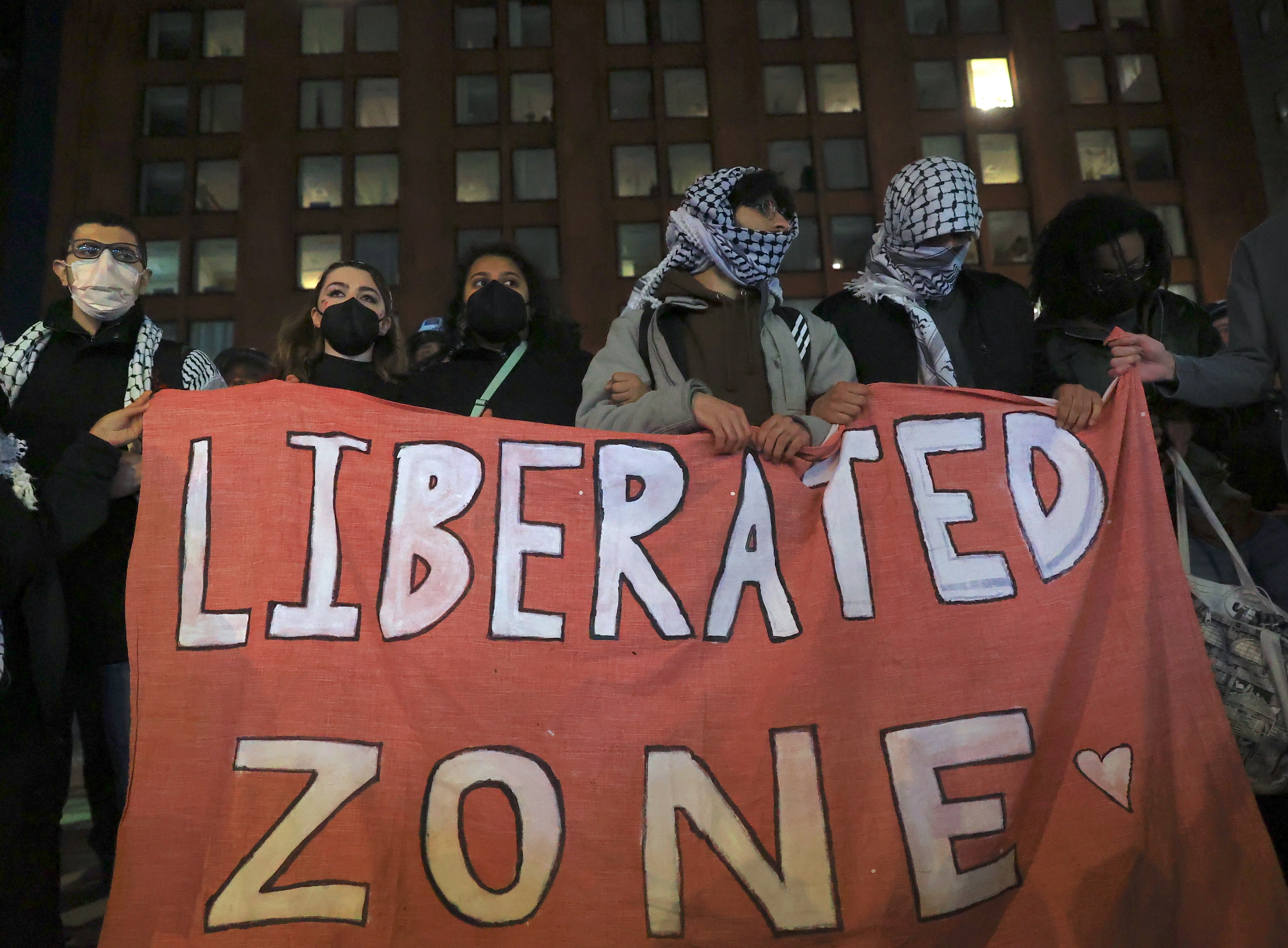
What the backlash to student protests over Gaza is really about
Why Planes Are Much Safer Than Cars (An Analysis)
With both air and car travel being so ubiquitous nowadays, you might be wondering if planes or cars are the safer mode of transportation.
Whatever way you look at it, planes are significantly safer than cars, so driving is undoubtedly much more dangerous than flying.
But it’s important to take a closer look at the statistics to get the full picture, including safety statistics for smaller vs. larger planes and commercial vs non-commercial aviation, as well as if you are more likely to survive a plane crash or car crash.
Table of Contents
- 1 Chances of Dying in a Plane Crash vs. a Car Crash
- 2 Small Planes vs. Commercial Planes Crash Statistics
- 3 You’re More Likely to Survive a Car Crash
- 4 You Can Increase Your Chances of Surviving a Plane Crash
- 5 How to Increase Your Chances of Surviving a Car Crash
- 6 3 Reasons Why Planes Are Safer Than Cars
Chances of Dying in a Plane Crash vs. a Car Crash
According to the NSC (National Safety Council), the odds of dying in a car crash as a driver are 1 in 114, and 1 in 654 as a passenger.
The odds of dying in a plane crash are 1 in 9,821 , though this accounts for both general aviation, that includes small planes, and commercial aviation.
Looking at these statistics, it’s easy to come to the conclusion that air travel is much safer than car travel.
However, the data doesn’t account for any differences between general aviation and commercial aviation.
For this, we need to refer to other statistics.
Related: What Are the Chances of a Plane Crashing? (Aircraft, Airline, Country, Year)
Small Planes vs. Commercial Planes Crash Statistics
2017 was the safest year on record for air travel, as there wasn’t a single fatality on a passenger jet.
However, if we take a look at the statistics for general aviation, which is what smaller aircraft qualify under, the numbers paint a different picture.
The NTSB (National Transportation Safety Board) recorded 1,316 accidents and 346 deaths.
To put this another way, according to the FAA, in 2017 general aviation aircraft logged a total of 21.7 million flight hours, with a fatal accident rate of 0.931 per 100,000 hours.
US airlines racked up 19 million hours without a single fatality.
Okay, you might be thinking, 2017 was just an anomaly.
Well, according to the International Air Transport Association , there was just one major aviation crash for every 7.7 million flights in 2021.
To put it another way, you would need to take a flight every day for 10,078 years to be involved in an accident with at least one death.
So, in fact, commercial aviation, which refers to the planes we all take for vacation and business purposes, is significantly safer than driving – and it’s not close in any way.
Related: How Often Do Planes Crash? (U.S., Worldwide, Yearly)
You’re More Likely to Survive a Car Crash
The US National Transportation Safety Board reviewed aviation accidents from 1983-1999 and found that more than 95% of passengers survived accidents, including 55% in the most serious incidents.
In the USA, in 2020, there were 35,766 fatal accidents, which resulted in 38,824 deaths, or 106 car accident deaths per day.
This means that one out of every 147 accidents is fatal, which is just 0.7%.
So, the data tells us that if you are involved in a plane crash, while your odds of survival are quite high, your odds of surviving a car crash are significantly better.
You Can Increase Your Chances of Surviving a Plane Crash
Unfortunately, there is nothing you can do that will substantially increase your odds of surviving a plane crash .
The following may marginally help, though:
- Sit in one of the back rows
- Wear your seatbelt
- Avoid wearing flammable clothes
- Avoid certain airlines and planes
How to Increase Your Chances of Surviving a Car Crash
Even though just one out of every 147 accidents is fatal, which is just 0.7%, there are steps you can take to even further improve your chances of surviving a car crash.
- Always wear your seat belt
- Do your research and buy the safest car you can afford
- Store anything that could turn into a projectile
- Regularly maintain your car
- Sit as far back from the steering wheel as possible
- Reduce your speed to reduce the impact when a crash is inevitable
3 Reasons Why Planes Are Safer Than Cars
- Distribution of Responsibility
Every flight you take consists of multiple people sharing in the responsibility to ensure a safe flight.
From the pilots to cabin crew, aircraft dispatchers, and air traffic controllers , every person is fully aware of their very specific responsibilities to ensure that no problems will occur – and if a problem does occur, it can be rectified quickly.
- Extensive Training and Certifications
There’s no doubt that getting a driver’s license is much easier than getting a pilot’s license.
Airline pilots have to go through extensive training and log at least 1,500 flight hours to qualify for an airline transport pilot license.
Certain requirements must also be met to qualify for a medical certificate in order to fly.
- Advanced Safety Features and Technology
A modern airliner contains so many advanced safety features and technology to account for every possible danger.
This includes communications, navigation, monitoring, fuel, aircraft-flight control, weather, collision-avoidance, weather, and aircraft management systems.
Cars also contain important safety features and technology, but they are not as advanced as the ones found in planes, and there is no legislation that requires all cars to feature these systems either.
Ella Dunham
Ella Dunham, a Freelance Travel Journalist and Marketing Manager, boasts an impressive career spanning eight years in the travel and tourism sectors.
Honored as one of "30 Under 30" by TTG Media (the world’s very first weekly travel trade newspaper), a "Tour Operator Travel Guru" and "Legend Award" winner, Ella is also a Fellow of the Institute of Travel, a Member of the Association of Women Travel Executives, has completed over 250 travel modules, and hosts travel-focused segments on national radio shows where she provides insights on travel regulations and destinations.
Ella has visited over 40 countries (with 10 more planned this year).
Related Posts:

What happens if you don't use airplane mode on your flight? Here's the answer to that, and more common travel questions.
Posted: April 25, 2024 | Last updated: April 29, 2024
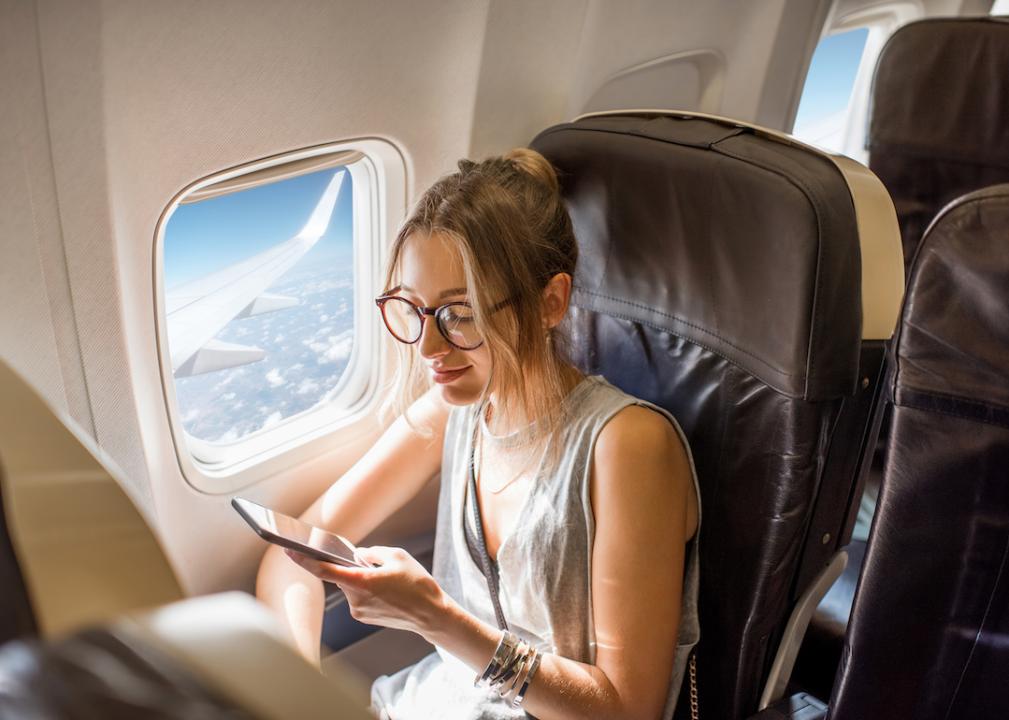
What is airplane mode, anyway? 5 travel questions about flying with phones answered
In many ways our phones have become the keys to our lives. We use them to bank, take photos of our families, and share those pictures on social media. We use them to buy everything from clothes to groceries to gasoline. And there's a good chance your phone holds an entire archive of every for-friends'-eyes-only texts you've ever sent.
Even if we're planning to unplug on a trip, it feels almost unthinkable to leave our phone at home. We use them to check in for flights, act as our boarding passes, book ride-shares or plan bus routes, find restaurants, check museum hours, or just kill time. But given all the extra phone usage that comes with travel, we're presented with myriad new concerns. What's safe and what isn't? Can you trust this public Wi-Fi network? Our pocket-sized devices may feel even more necessary outside of our comfort zones (not to mention time zones), so protecting them and all the info they hold seems even more critical when we're away from home.
In partnership with Visible , Stacker looked at recommendations from manufacturers and consumer experts for smart and safe ways to fly with your phone. Can you use an unprotected Wi-Fi network at a cafe? Should you trust the chargers on the plane? Find out the answers to those questions and more.
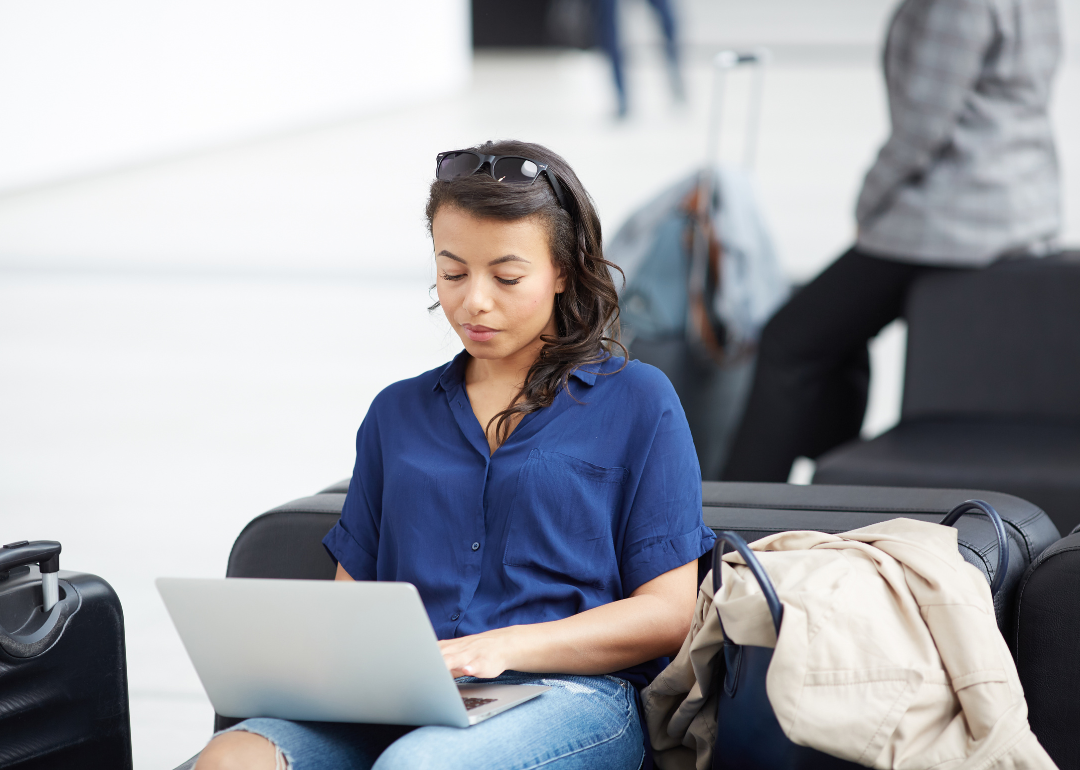
Is it safe to use airport Wi-Fi?
The fear of public Wi-Fi hotspots is something of a relic , according to experts who spoke with the Washington Post. These days, most reputable websites and apps use HTTPS. This protocol encrypts data, making it very hard for potential digital eavesdroppers to spy on you. Before leaving home, make the most of HTTPS by setting your web browser to use only that connection type.
Check to ensure your web activity uses HTTPS by looking for these letters at the start of any URL or website address. Pages that start with HTTP are not encrypted. It's more difficult to tell whether mobile apps encrypt their traffic, so surfing for entertainment is better than accessing sensitive information while out and about.
If you're checking particularly sensitive information—say, your bank account—you can upgrade your security with a trustworthy virtual private network. VPNs further encrypt your digital traffic, making it virtually impossible for any eavesdropper to access it. Still, before connecting to an unsecured public Wi-Fi, use your mobile network to turn your phone into a hotspot.
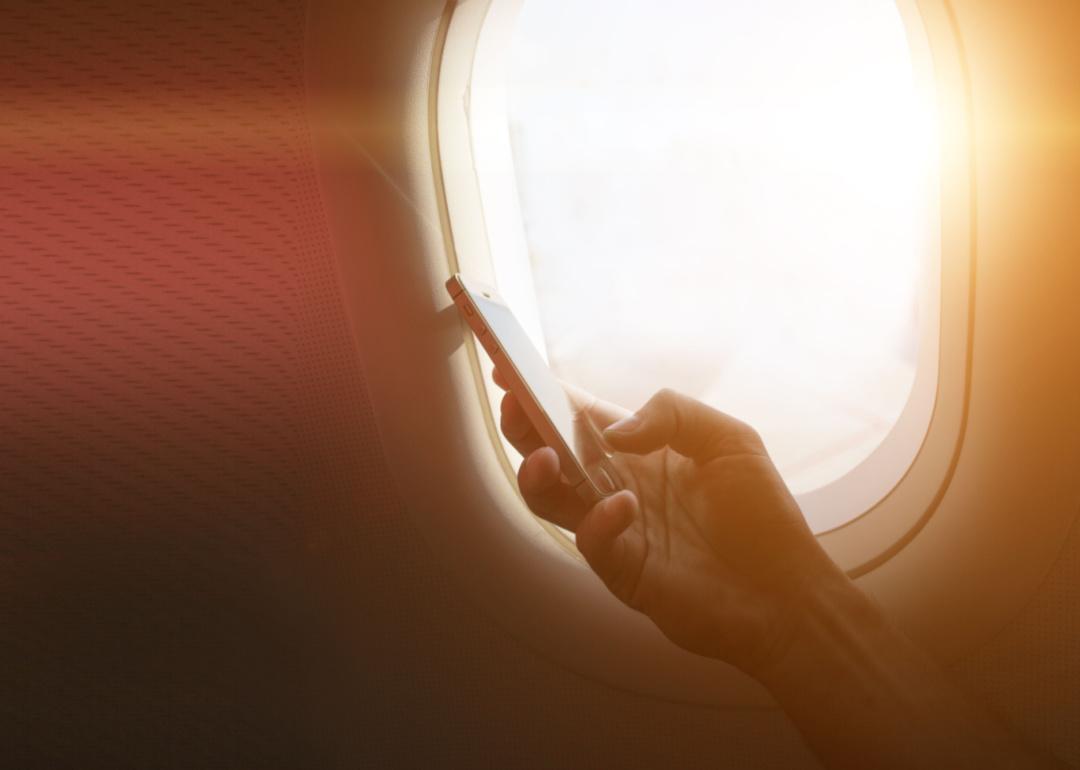
What happens if you don't use airplane mode?
The Federal Aviation Administration bans cell phone calls on flights because of how the phone's signals interact with the plane's electronics. However, you can still use your phone if you put it in the aptly titled "airplane mode." This mode, which is standard on all modern smartphones, disables the phone's cellular connection as well as its Bluetooth and Wi-Fi capabilities.
It's worth keeping in mind that forgetting to turn on airplane mode is extremely unlikely to endanger your flight. As it turns out, according to a 2017 survey by Allianz Global Assistance , 2 in 5 people report leaving their cell service enabled on flights, and there's no evidence signal interference from a cellphone has ever caused a crash. It's still best to listen to the airline's guidance regarding cell phone use in-flight.
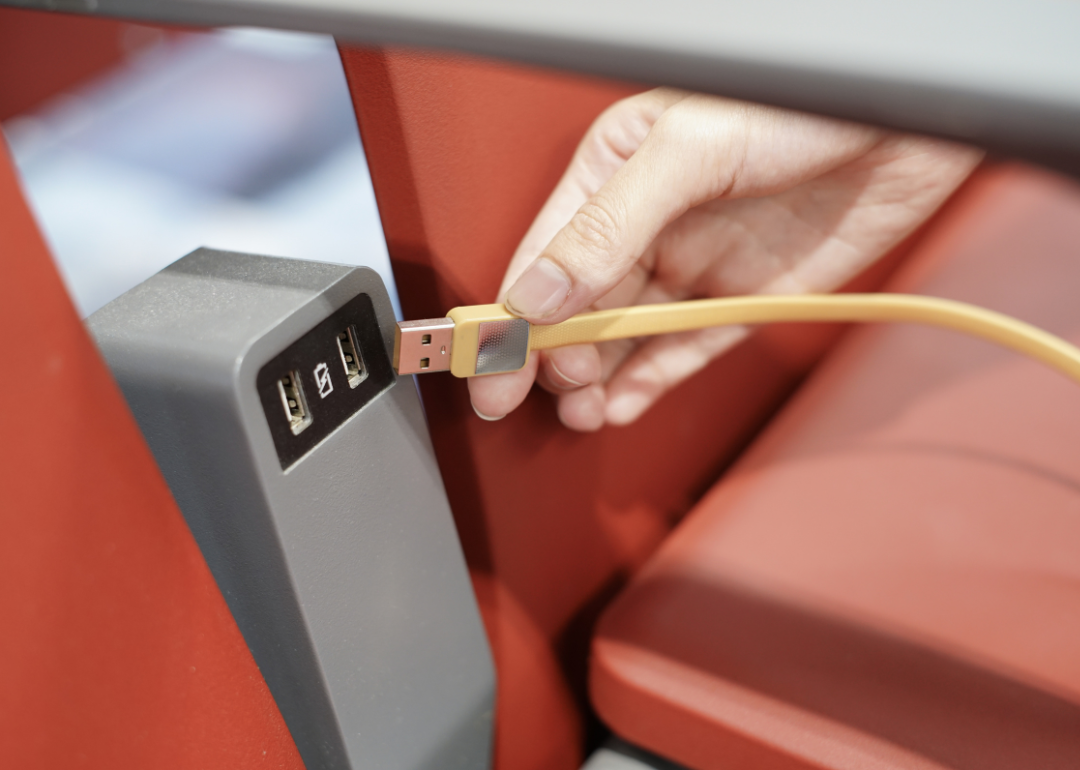
Can you trust the chargers on the plane?
While not quite an out-of-date belief, " juice jacking "—a technique where a hacker uses public chargers to install spyware on your phone—is relatively unlikely, according to experts who spoke with the Washington Post. According to the FCC, cybersecurity experts warn that general public USB ports can have malware installed. If a public USB charging port prompts you to share data once you plug in your phone or mobile device, don't.
There are safer ways to charge your phone. Use your own charging cable and turn your phone off while it charges. If you want to be extra cautious, use a data-blocking adapter. These plugs connect to your USB cord and block its ability to transfer data, allowing you to charge safely.
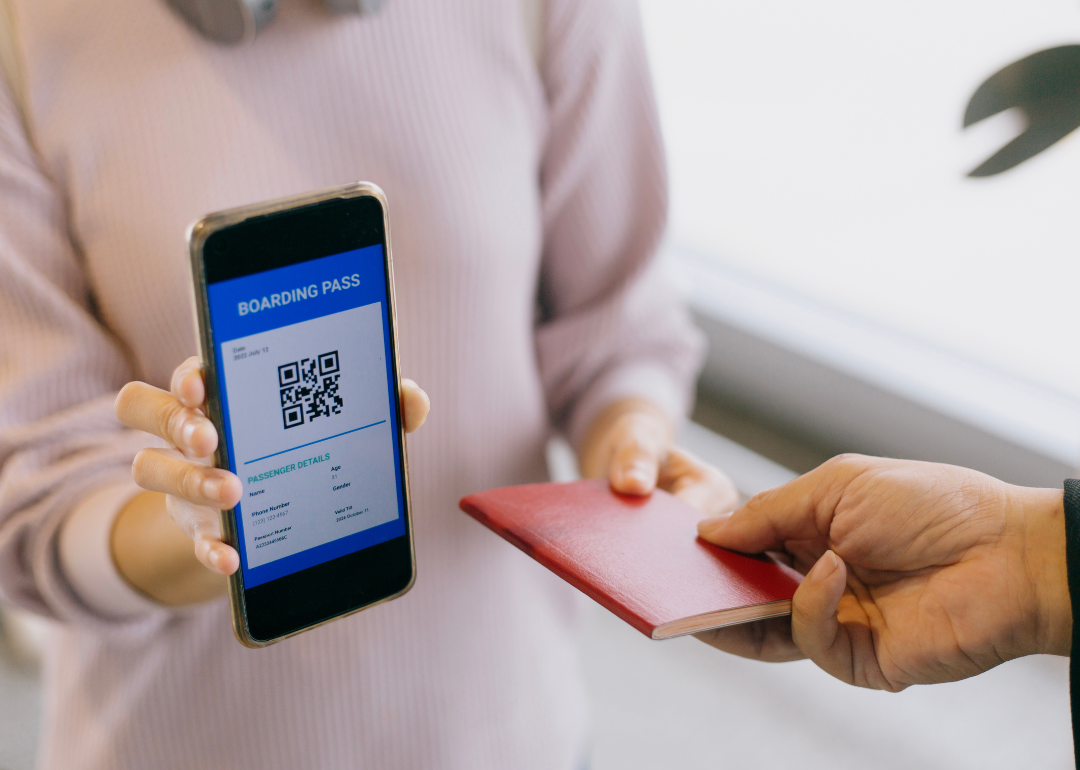
How can you conserve your battery on a long flight?
If your phone is your boarding pass, your ride planner to your hotel, and credit card to pay for said hotel, you need it to be on. Airplane mode will save you some precious battery time by disabling a few energy-draining features of your phone. Even more useful are the battery-saving modes, which turn off certain features like email fetching or lower the phones brightness, that most phone manufacturers offer.
If you're still getting dinged with low-battery warnings, invest in a portable charger—a compact, spare power bank that can get you back to 100%.
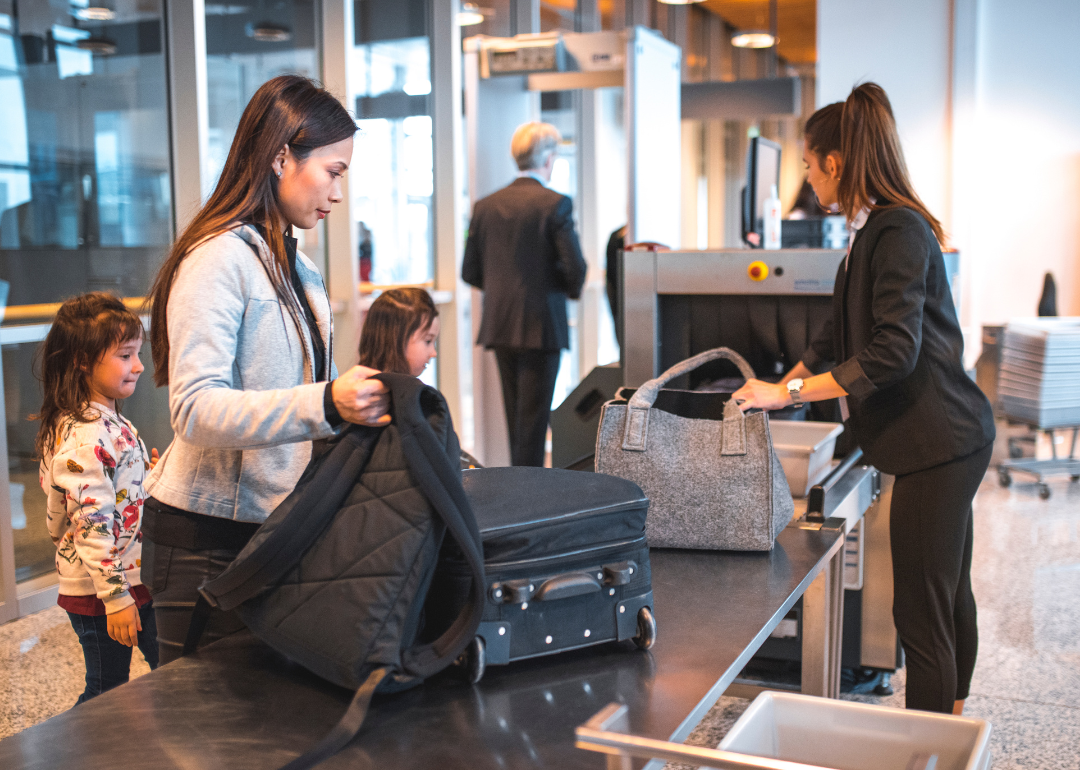
What's with all the rules about lithium batteries?
If you've taken a flight recently, you've undoubtedly heard the rules about lithium batteries. For instance, if you check a bag with a lithium-battery-powered device, that device must be powered off. You must also keep any spare lithium batteries in your carry-on luggage.
The reason for all this? It's a lot more vital than keeping your phone in airplane mode. In the past five years, the number of fires related to lithium-ion batteries has jumped over 40% , according to a CBS News analysis of Federal Aviation Administration data. Before the next time you jet off, check the FAA's website for what to do with all your electronic devices.
Story editing by Carren Jao. Copy editing by Kristen Wegrzyn. Photo selection by Lacy Kerrick.
This story originally appeared on Visible and was produced and distributed in partnership with Stacker Studio.
More for You
The most dangerous state to drive in in the US, according to data—plus, see where your state ranks
‘I plan on dying [in] my cubicle’: 41-year-old woman owes nearly $125,000 in debt and doesn’t know how she’s going to retire. Here’s what you can do if you’re in the same situation
If you and your partner use any of these 5 phrases regularly, your relationship is stronger than most
A Massive U.S. Nuclear Plant Is Finally Complete. It Might Be the Last of Its Kind.
Your senses will shut down in a specific order when you’re about to die
Man loses 450 pounds after reaching 'rock bottom.' 1 key diet change helped
15 “As Seen On TV” Products That Are Well Worth The Money
Gaetz gets last-minute primary challenger in Florida
Barack Obama shares his No. 1 piece of advice for his own daughters: Don't let your hunger for success ruin your happiness
Marriage counsellor shares one sign your relationship is really over
Scientists claim people with this blood type more likely to have early stroke
Alarm raised over bizarre images circulating on Facebook
5 Apple Products To Avoid Buying
How much protein do you need to build muscle?
Anti-Trump DA's no-show at debate leaves challenger facing off against empty podium
Tank Dell, Houston Texans wide receiver, wounded in Florida shooting
Jeff Bezos predicts Amazon's 'inevitable death'
6 Things A Doctor Wants You To Do Before Getting A Blood Test
How to know when it’s time to walk away from a sibling
Age at which you're officially old has changed
Another Boeing plane issue? Don't fall for the headlines. | Cruising Altitude
Not all issues involving Boeings are created equal.
Boeing has been in the news a lot lately, and that’s partly because of me. As an aviation reporter, it’s my job to follow what’s going on at the company and update the public about any important developments. Where it gets a little muddier, though, is when some incident involves a Boeing airplane that is not specifically a Boeing Issue (caps intentional).
As a result of some very high-profile and serious safety incidents, Boeing is rightfully under a microscope now. But just because there’s a news appetite for it doesn’t mean that Boeing is responsible for everything that goes on with its aircraft once they leave the factory floor.
At a time when people are thinking about the planes they fly on more than usual, it can be hard to highlight relevant information without misleading readers into thinking there’s more malfeasance than there actually is.
It’s a newsroom conversation every time we see Boeing bubbling in news trends. My job is to hold Boeing accountable without fearmongering.
Aviation professionals agree that while Boeing and its practices deserve scrutiny, you should still feel all right flying on its planes.
So, let’s try to cut through the noise.
What’s wrong with Boeing?
“There are genuine worries about Boeing in terms of its performance as a company, its safety culture, its manufacturing culture,” Jon Ostrower, editor-in-chief of The Air Current , told me.
It’s hard to boil down the problems at Boeing because they didn’t happen overnight. They’re systemic and the result of a series of small changes and corporate decisions over decades that de-emphasized engineering excellence and safety and put extra importance on shareholder returns. But that’s not the only thing.
“During COVID we had a lot of retirements that happened both on the pilot front and the mechanic front, and there was a lot of senior expertise that left,” Laurie Garrow, a civil engineering professor specializing in aviation at Georgia Tech, told me. “The senior expertise probably provided a series of checks and balances that are being relearned and reinstitutionalized in some companies.”
Garrow is on a consulting contract with Boeing on unrelated issues. She said her perspective applies to not just Boeing but the aviation industry as a whole.
According to Ostrower, Boeing needs to change its corporate culture to emerge from the current shadow.
“Boeing’s behavior in terms of the design of the 737 Max is an aberration in an otherwise phenomenally safe system,” he said. “They need to put themselves back together, and I mean that quite literally. There has been an internal breakup of the company over decades that has fractured their workforce, both the engineers and the machinists, spiritually and geographically.”
Boeing is, of course, under investigation by federal regulators as a result of these issues. It’s unclear what the outcome of those investigations will be, but it seems likely that some internal company changes will be required.
What airplane issues is Boeing responsible for?
“What’s going on at Boeing is distinctly separate from the types of issues that happen in service, that by the way, would largely go unnoticed or unreported on if it wasn’t what happened on Alaska 1282,” Ostrower said.
Said another way: A Boeing plane can be involved in an incident that has nothing to do with Boeing itself.
“There is a pile-on fixation that happens in the broader media landscape,” Ostrower said. “That is a function of how people are feeling about their confidence in Boeing, but it fundamentally is not related to anything that’s been going on at Boeing.”
Garrow pointed out that aviation is extremely safe overall and has only gotten safer over time.
“A lot of the safety features have redundancy. A lot of the kinks have been worked out,” she said. “Not every aircraft flies perfectly, there are maintenance issues that happen, but they are getting increased scrutiny right now.”
Of course, Boeing is responsible for manufacturing defects like the missing bolts that led to the Alaska Airlines explosive decompression earlier this year. But as an airframer, Boeing doesn’t manufacture things like engines – those are supplied by other companies – or place the tires on planes that have been in service for many years. Once an aircraft is away from the factory, airlines largely take over its maintenance.
“If a flight is delayed because of a problem, it’s because someone has noticed it and it’s being addressed,” Ostrower said.
That’s the system working.
“These are incredibly complex machines, and they run at a reliability level that is truly extraordinary,” Ostrower added. “There are levels of redundancy. You can defer maintenance items in a safe and well-understood way. … 'This component wasn’t active on my airplane, and that’s fine, you can operate safely with that, it’s approved to do that.'”
What is an emergency landing?
Another gray area when it comes to the news is emergency landings. A casual traveler understandably hears the word “emergency” and thinks of the absolute worst case. Still, the Federal Aviation Administration allows, and in fact encourages, pilots to declare an emergency in any “ distress or urgency condition .”
According to the pilot/controller glossary , that can include “a condition of being concerned about safety and of requiring timely but not immediate assistance.”
Aviation safety is built on redundancy and overcaution, so a pilot declaring an emergency is usually another sign that the system is working as designed. It doesn’t always bear being reported on.
Are Boeing airplanes safe?
The short answer is yes.
“Trust has been broken at Boeing and the airlines are paying for that,” Ostrower said. “It makes it really hard for us to say ‘Trust the airlines and their processes,’ but you have to because there’s ample evidence and ample history and safety culture to back that up.”
Thousands of Boeing aircraft fly without incident every day. Eventually, the company’s place at the top of the news cycle will fade, though the focus on safety throughout aviation will remain as it always has.
“People shouldn’t have to think about what kind of airplane they’re getting on, and we need to get back to that,” Ostrower said. “The way we’re going to get back to that is through getting not just Boeing but the airlines on a reliable footing.”
In the meantime, Garrow said, travelers should consider the bigger picture.
“The few times an aircraft has gone down or there has been a major accident. I personally have found it very difficult the next day to get on a flight if I’m traveling. Aviation has one of the best safety records of all of the modes and I personally don’t want to change my life – not go on my dream vacation to Europe or not go on my professional trip that I literally could not drive to – because of a fear of flying,” she said. “I just always remind myself that aviation has had one of the best safety records, and I’m comforted by the fact that I’m not driving the plane, that I have two experienced pilots that have been trained for multiple safety scenarios, and I’m in good hands when I travel.”
Zach Wichter is a travel reporter for USA TODAY based in New York. You can reach him at [email protected].
- Search Please fill out this field.
- Manage Your Subscription
- Give a Gift Subscription
- Sweepstakes
- Travel Products
- Trends + Deals We Love
8 Plane Habits That Really Annoy Your Flight Attendants — and the Travel Accessories That Solve Them
These travel accessories ensure you’re not “that” passenger.
:max_bytes(150000):strip_icc():format(webp)/Alexandra-Domrongchai-Headshot-0b9572e52b9c4f69b7b8c388c2f830d3-a0d22381cba940719a3100a66044827a.jpg)
If you click on links we provide, we may receive compensation.
Travel + Leisure / Marcus Millan
Flight attendants play an important role in ensuring the safety, security, and comfort of all airline passengers. Between preparing the cabin for takeoff and liaising important updates with the pilot and passengers, they serve as emergency responders in the air. Above all, flight attendants warrant your consideration and respect before, during, and after takeoff.
At Travel + Leisure , we aim to offer travel guides , inspiration, and tips to guarantee the safety and comfort of travel professionals, such as airline crew members, who work tirelessly to ensure our comfort. In fact, one of our contributors delved into the minds of flight attendants to compile a list of what passengers do that annoy flight attendants, and ever since, I’ve been dedicated to finding solutions for these easily avoidable flying faux pas.
I’ve gathered a comprehensive list of accessories that you should consider adding to your travel bag that address common annoyances. Below, you’ll discover why you should bring a reusable water bottle onboard and a legroom hack that’ll keep you from inconveniencing others. And the best part? All of these items can be found at Amazon starting at just $11.
Don’t: Ask for Water Immediately After Boarding
Do: Bring a Reusable Water Bottle
Hydro Flask Stainless Steel Water Bottle
One flight attendant told Travel & Leisure how frustrating it can be when passengers request water upon boarding, not realizing that they “only have a few minutes to get everyone seated and buckled up so that we can close the boarding door." If you anticipate being thirsty as soon as you sit, consider bringing a reusable water bottle like this insulated Hydro Flask one. The water bottle is a stellar choice for travel since it features a leak-proof flex cap and double-wall vacuum insulation, which means it’ll keep liquids hot or cold for hours.
Don’t: Stretch in the Middle of the Isle
Do: Get an Airplane Footrest
Basic Concepts Airplane Foot Hammock
A flight attendant expressed how frustrating it can be when people stretch their legs in the aisle. And we get it: Being crammed on a plane is far from the ideal way to start any trip. But there’s a solution to get more leg room without upgrading your seat: the Basic Concepts Portable Foot Hammock at Amazon. The footrest comes with an adjustable strap that can be wrapped around the seat tray in front of you for quick assembly. In fact, one frequent flier gushed that “they have no idea how I managed to travel without these in the past.” They continued, writing, “I usually have swelling when I fly, and this [footrest] helped alleviate any discomfort and allowed more space for my legs."
Don’t: Demand Snacks or Food After Service is Complete
Do: Pack a Snack
KIND Minis Dark Chocolate Nuts and Sea Salt Caramel Pack
If you sleep through snack time or refuse meal service, you might not be able to get food later. Rather than go hungry, opt to pack a few extra snacks, like these mini KIND granola bars that are studded with nuts and won’t take up too much space in your bag.
Don’t: Ask for Headphones
Do: Bring a Bluetooth Connector
Isobel Store Bluetooth Transmitter Receiver
As important as in-flight entertainment is to a comfortable flight, it is not a prerequisite for a safe one. And with more people carrying cord-free Bluetooth headphones to watch movies during the flight, it’s a smart idea to bring a Bluetooth connector. To pair the two devices, simply power them both on and pair them to connect. It’s that easy. This device is also rechargeable and can hold up to 10 hours of playtime.
Don’t: Ask for a Pillow or Blanket
Do: Pack Travel-sized Versions of Your Own
Pavila 2-in-1 Travel Pillow Blanket
We promise you’ll become the most popular passenger if you take the time to properly prepare for your flight. This includes bringing your own pillow and blanket. Opt for this innovative two-in-one pillow and blanket set that comes with a compact pillow and ultra soft blanket. When neatly packed, it measures in at just 11 inches by 12 inches and comes with a convenient strap that effortlessly attaches to your suitcase.
Don’t: Put Your Backpack in an Overhead Bin
Do: Get a Compact Backpack or Underseat Carry-on
Matein Large Travel Backpack
Overhead bin space is precious and designated for larger carry-on suitcases and duffels — not backpacks. If you’re struggling to fit your backpack underneath your seat, take that as a sign that it’s time for an upgrade. Opt instead for this $32 backpack that I refuse to travel without . It’s equipped with plenty of spacious compartments, is easy to carry, and features proactive padding for personal belongings, all while remaining compact enough to tuck under your seat.
Amazon Basics Underseat Carry-on
Another great lightweight option that fits under your seat is this Amazon basics carry-on bag. This soft-side rolling carry-on is specifically designed to fit under airplane seats, making it an excellent option for business travel, short weekends, and more. At roughly 13.4 inches by 9.5 inches by 14 inches, this carry-on bag is designed to hold plenty of items, yet remains compact enough to slide under the seat.
Don’t: Ask Your Flight Attendant to Help with a Bag That's Clearly Too Heavy
Do: Get a Lightweight Carry-on Instead
Travelers Club Chicago Hardside Spinner 20-inch Carry-on
Flight attendants don’t get paid until the aircraft takes off , so if they get injured during the boarding process they are not eligible for workers’ compensation. It’s important to pack a bag that you can lift yourself, and that begins with a lightweight carry-on. Claiming the highly coveted spot as one of Amazon’s best-selling carry-on suitcases , this under-$50 suitcase weighs less than 6 pounds and is a mere 20 inches in size, so it’s easy to lift. In addition to its convenient size, this suitcase boasts an organized, lined interior with multiple pockets, leaving plenty of space for your personal belongings.
Don’t: File or Clip Your Toenails During Your Flight
Do: Wear Compression Socks to Avoid Temptation and Relieve Tension
Charmking Compression Socks
Even though we have the utmost trust in our readers to know that you would never clip your toenails on a flight, I’ll use any opportunity to gush over how much compression socks make long travel days more comfortable. Wearing a pair of compression socks will not only wade off any temptation to clip or file your nails mid-flight, but the socks will also relieve tension by stimulating circulation in your legs and feet to reduce swelling in the air. These socks come in a convenient pack of three and are available in a plethora of colors including black , nude , and white .
Love a great deal? Sign up for our T+L Recommends newsletter and we’ll send you our favorite travel products each week.
See More T+L Shopping Deals
:max_bytes(150000):strip_icc():format(webp)/flight-attendant-loved-laptop-bag-tout-12995f7468e54516b52453e73b8c6cc7.jpg)
- International edition
- Australia edition
- Europe edition
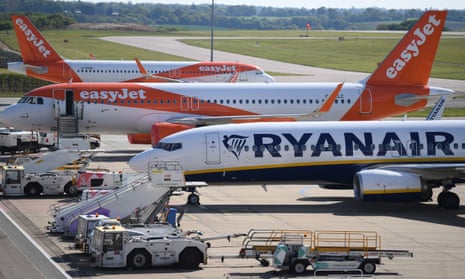
Thousands of flights to and from Europe affected by suspected Russian jamming
About 46,000 aircraft have logged GPS problems over Baltic Sea since August, says report
Flights in and out of Britain are among thousands that have been affected by suspected Russian jamming of GPS systems.
More than 2,300 Ryanair flights have reported incidents of GPS interference since last August, according to a report, as well as almost 1,400 at Wizz Air, 82 at British Airways and four from easyJet.
About 46,000 aircraft in total have logged problems with GPS over the Baltic Sea in the same time period, the Sun reported, based on analysis of flight logs with the website GPSJAM.org. Most of the GPS problems reported on the website have come in eastern Europe , bordering Russia.
The satellite-based GPS forms part of an aircraft’s navigation system, and interference can pose a safety risk.
The UK government confirmed in March that an RAF plane carrying the defence secretary, Grant Shapps, had its GPS signal jammed while flying near the Russian Baltic exclave of Kaliningrad, while heading back to the UK from Poland.
Although Downing Street said the move did not threaten the safety of the aircraft, a defence source described it as “wildly irresponsible”.
The International Air Transport Association and the EU Aviation Safety Agency (Easa) held a summit in January to discuss GPS jamming and “spoofing”, or sending bogus signals, with Easa reporting a sharp rise in the number of attacks.
While Easa said countering the threat was a priority, the UK’s Civil Aviation Authority played down the risk and said jamming was often associated with military activity but did not mean commercial planes were being directly targeted.
Glenn Bradley, the head of flight operations at the CAA, said: “Aviation is one of the safest forms of air travel and there are several safety protocols in place to protect navigation systems on commercial aircraft.
“GPS jamming does not directly impact the navigation of an aircraft, and while it is a known issue, this does not mean an aircraft has been jammed deliberately.”
after newsletter promotion
A Ryanair spokesperson said: “In recent years there has been a rise in intermittent GPS interference which has affected all airlines. Ryanair aircraft have multiple systems to identify aircraft location, including GPS. If any of the location systems, such as GPS, are not functioning then the crew, as part of standard operating procedures, switch to one of the alternate systems.”
An easyJet spokesperson said there were “multiple navigation systems onboard commercial aircraft as well as procedures in place which mitigate against issues with GPS that can occur for various reasons”.
BA was approached for comment.
- Airline industry
- British Airways
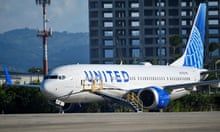
United Airlines blames Boeing problems for $200m hit to earnings

EasyJet and Wizz Air cancel flights to Tel Aviv after Iran attack on Israel
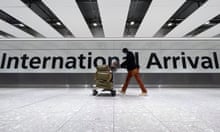
Heathrow urges government to scrap £10 fee for transit passengers
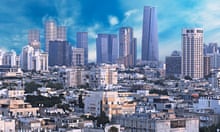
BA, easyJet and Wizz Air resume flights to and from Israel

Dutch airline KLM misled customers with vague green claims, court rules
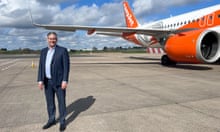
EasyJet joins calls for UK government to help fund hydrogen-powered flight

United Airlines CEO vows to review recent safety incidents and learn ‘the right lessons’
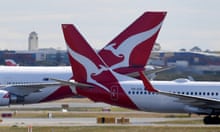
Qantas workers suffered depression after being illegally sacked, compensation hearing told
Most viewed.
- Diversity, Equity & Inclusion at Delta
- Racial and Ethnic Diversity
- LGBTQ+ Diversity
- People with Disabilities
- Veterans and the Military
- Sustainability
- Awards & Recognition
- Global Partners
It’s back by popular demand — Delta and American Express unveiled the next iteration of the limited-edition Boeing 747 Delta SkyMiles Reserve Card on the heels of the overwhelming response from Card Members when first launched in 2022 .
The new limited-edition cards are cloud-white in color and made from two Delta Boeing 747 aircraft 1 that were retired after more than 27 years of service and feature each plane’s history, including their first and last flights, tail number and number of miles flown.
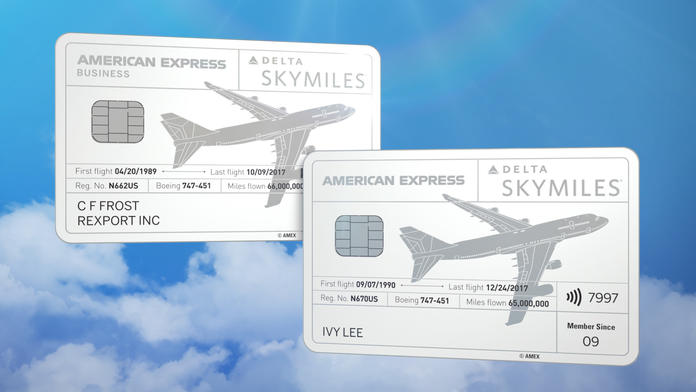
The card is available exclusively for new and existing Delta SkyMiles Reserve and Reserve Business Card Members from April 25 through June 5, 2024, while supplies last. The new design comes after recent enhancements made to the Delta SkyMiles American Express Cards to improve the travel experience and deliver everyday value to Members, both in the air and on the ground.
“At Delta, innovation and experience are at the core of everything we do,” said Prashant Sharma, V.P. of Loyalty at Delta Air Lines. “Each card carries the legacy of countless journeys and embodies the spirit of exploration that drives our customers and all of us at Delta. When combined with the recently upgraded benefits, these cards provide a nod to our storied past and symbolize the elevated experiences our customers can expect in their future travels.”
In 2022, Delta and American Express launched the first iteration of the limited-edition Boeing Delta 747 Card design, one of the most iconic airplanes in aviation history. The new design is made with 33% metal from a retired Delta Boeing 747 plane and has a white glossy finish, which is inspired by clouds.
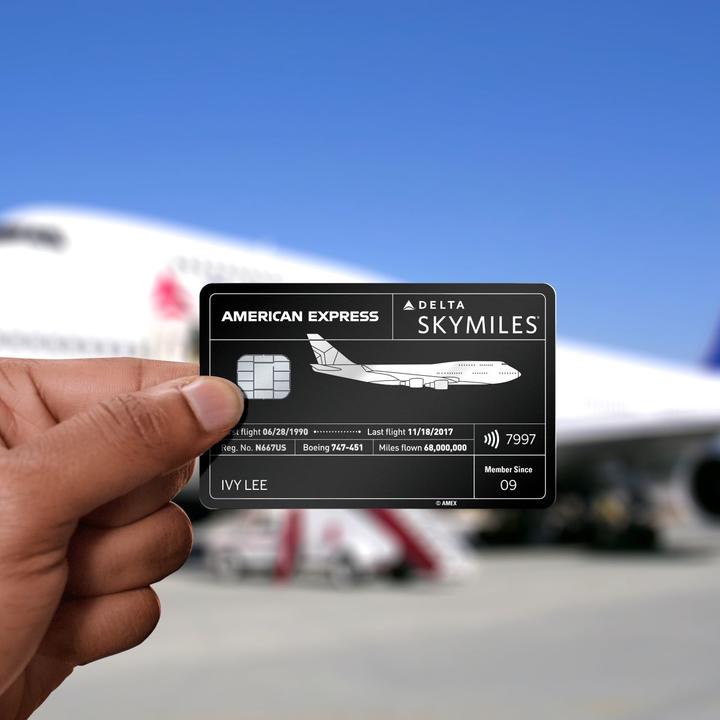
“We’re bringing back one of our most popular Card designs ever with a new look honoring the ‘Queen of the Skies,’” said Jon Gantman, Senior Vice President and General Manager of Cobrand Product Management at American Express. “Given the strong response from customers with our first Card design, we wanted to find another exciting opportunity for aviation enthusiasts and Card Members to have a piece of aviation history in their wallets.”
The Delta SkyMiles Reserve and Reserve Business American Express Cards offer premium travel benefits for Delta loyalists, including an enhanced Companion Certificate each year after renewal 2 , an MQD Headstart that helps you get closer to Status, miles accelerators, access to exclusive reservations through Global Dining Access by Resy 3 , and more.
For more information about the Delta SkyMiles Reserve and Reserve Business Cards, visit go.amex/747card .
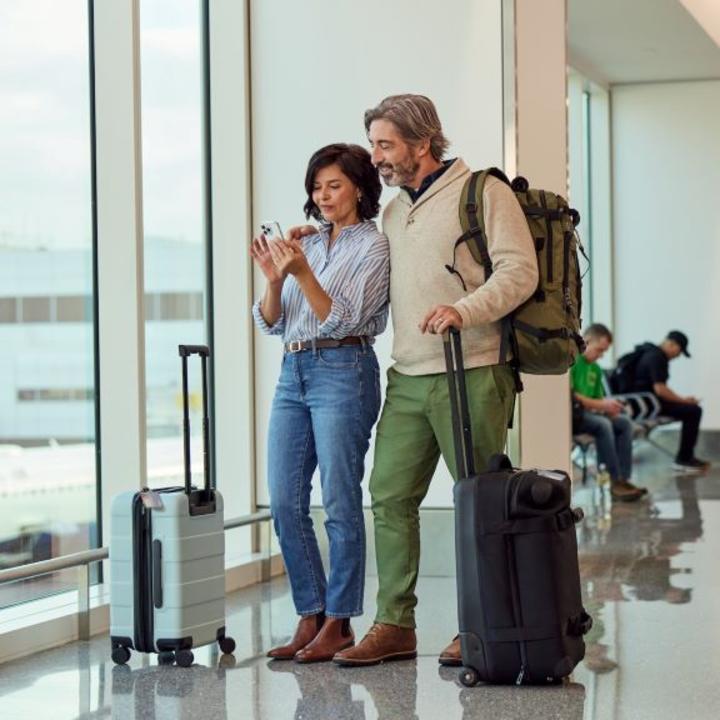
1 The new limited-edition Boeing 747 Card design is made with 33% metal from retired Delta Boeing 747 aircraft.
2 The Companion Ticket requires payment of the government-imposed taxes and fees of no more than $80 for roundtrip domestic flights and no more than $250 for roundtrip international flights (both for itineraries with up to four flight segments). Baggage charges and other restrictions apply. See terms and conditions for details.
3 Card Members must add their Delta Skymiles Reserve or Reserve Business American Express Card to their Resy profile to access Global Dining Access by Resy.
- American Express
- Delta Reserve Business AMEX Credit Card
Not finding what you need?
- Best overall
- Best for expensive trips
- Best for exotic trips
- Best for annual plans
How we reviewed travel insurance for seniors
Best travel insurance for seniors of may 2024.
Affiliate links for the products on this page are from partners that compensate us (see our advertiser disclosure with our list of partners for more details). However, our opinions are our own. See how we rate insurance products to write unbiased product reviews.
Reaching your golden years doesn't mean your adventures have to end. In fact, in this stage of life, you'll hopefully have more time and resources to travel. But as a senior citizen, you'll want to ensure you have travel insurance that covers any health-related issues arise while you travel.
Our top picks for the best senior travel insurance
- Best overall: Allianz Travel Insurance
- Best for expensive trips: John Hancock Travel Insurance
- Best for exotic trips: World Nomads Travel Insurance
Best for annual plans: Travel Guard
How we rate the best senior travel insurance companies »
Compare travel insurance for seniors
Your health gets more unpredictable as you age, which makes travel insurance more important for seniors. Unfortunately, it's also more expensive. The best travel insurance for seniors won't have too steep of a price hike compared to rates for younger travelers. It will have high coverage limits for emergency medical coverage, trip cancellations, and and emergency medical evacuation. It's also important that your travel insurance offers pre-existing condition waivers , ideally at no extra cost to the traveler.
Here are our picks for the best travel insurance coverage for seniors in 2024.
Best overall: Allianz
- Check mark icon A check mark. It indicates a confirmation of your intended interaction. Good option for frequent travelers thanks to its annual multi-trip policies
- Check mark icon A check mark. It indicates a confirmation of your intended interaction. Doesn't increase premium for trips longer than 30 days, meaning it could be one of the more affordable options for a long trip
- Check mark icon A check mark. It indicates a confirmation of your intended interaction. Some plans include free coverage for children 17 and under
- Check mark icon A check mark. It indicates a confirmation of your intended interaction. Concierge included with some plans
- con icon Two crossed lines that form an 'X'. Coverage for medical emergency is lower than some competitors' policies
- con icon Two crossed lines that form an 'X'. Plans don't include coverage contact sports and high-altitude activities
- Single and multi-trip plans available
- Trip cancellation and interruption coverage starting at up to $10,000 (higher limits with more expensive plans)
- Preexisting medical condition coverage available with some plans
Allianz Travel Insurance is one of the most widely recognized names in travel insurance, and it stands out as one of the top travel insurance providers for seniors. It offers a wide range of policies covering medical treatments overseas and emergency medical transport.
Allianz also provides options for varying trip lengths. Its annual multi-trip policies , for example, cover any trip you make during your policy period, even if they aren't yet planned, making it an excellent option for seniors who vacation multiple times per year.
Read our Allianz Travel Insurance review here.
Best for expensive trips: John Hancock
- Check mark icon A check mark. It indicates a confirmation of your intended interaction. Offers 3 travel insurance plans
- Check mark icon A check mark. It indicates a confirmation of your intended interaction. Cancel for any reason rider available
- Check mark icon A check mark. It indicates a confirmation of your intended interaction. Affordable travel insurance premiums
- con icon Two crossed lines that form an 'X'. Reviews of claims process are mixed
- con icon Two crossed lines that form an 'X'. Buyers may not get specialty coverage for sports equipment and other high value items
- Trip cancellation for 100% of the trip cost
- Trip interruption insurance for up to 150% of the trip cost
- Emergency medical coverage of up to $250,000 per person
- Medical evacuation coverage of up to $1,000,000
John Hancock Travel Insurance plans for seniors offer some of the best coverage available. It provides generous maximum benefit amounts while still offering affordable prices.
Each plan includes coverages like trip cancellation, emergency accident, and emergency medical, with the option to add benefits like CFAR (cancel for any reason) . Plus, getting a free online quote is a quick and straightforward process.
Read our John Hancock Travel Insurance review here.
Best for exotic trips: World Nomads
- Check mark icon A check mark. It indicates a confirmation of your intended interaction. Coverage for 200+ activities like skiing, surfing, and rock climbing
- Check mark icon A check mark. It indicates a confirmation of your intended interaction. Only two plans to choose from, making it simple to find the right option
- Check mark icon A check mark. It indicates a confirmation of your intended interaction. You can purchase coverage even after your trip has started
- con icon Two crossed lines that form an 'X'. If your trip costs more than $10,000, you may want to choose other insurance because trip protection is capped at up to $10,000 (for the Explorer plan)
- con icon Two crossed lines that form an 'X'. Doesn't offer coverage for travelers older than 70
- con icon Two crossed lines that form an 'X'. No Cancel for Any Reason (CFAR) option
- Coverage for 150+ activities and sports
- 2 plans: Standard and Explorer
- Trip protection for up to $10,000
- Emergency medical insurance of up to $100,000
- Emergency evacuation coverage for up to $500,000
- Coverage to protect your items (up to $3,000)
World Nomads Travel Insurance is a great choice for active senior citizens under 70 who want comprehensive travel insurance. The key difference between World Nomads and many other providers is that it covers 200+ adventurous activities like scuba diving, mountain biking, surfing, skiing, and even bungee jumping. In addition, World Nomads' trip cancellation and emergency medical coverage includes COVID-19-related issues. Many other insurers are excluding that type of coverage now.
For adventurous senior citizens over the age of 70 years, World Nomads suggests working with its partner, TripAssure .
Read our World Nomads Travel Insurance review here.
Trip cancellation coverage for up to 100% of the trip cost and trip interruption coverage for up to 150% of the trip cost
- Check mark icon A check mark. It indicates a confirmation of your intended interaction. Trip cancellation coverage of up to 100% of the cost, for all three plan levels
- Check mark icon A check mark. It indicates a confirmation of your intended interaction. CFAR covers up to 75% of total trip costs (maximum of $112,500 on some plans)
- Check mark icon A check mark. It indicates a confirmation of your intended interaction. Medical coverage of up to $500,000 and evacuation of up to $1,000,000 per person
- Check mark icon A check mark. It indicates a confirmation of your intended interaction. Includes COVID coverage
- Check mark icon A check mark. It indicates a confirmation of your intended interaction. Above average baggage loss and delay benefits
- Check mark icon A check mark. It indicates a confirmation of your intended interaction. High medical evacuation coverage
- con icon Two crossed lines that form an 'X'. Premiums may run slightly higher than competitors
Travel Guard is a well-established and highly rated name in the travel insurance industry. It offers three main coverage options to choose from, and in general its policies have above-average coverage for baggage loss and baggage delays, plus high medical evaluation coverage limits.
- Trip cancellation coverage for up to 100% of the trip cost
- Trip interruption coverage for up to 150% of the trip cost
- Preexisting medical conditions exclusions waiver must be purchased within 15 days of initial trip payment
- Annual travel insurance plan and Pack N' Go plan (for last-minute trips) available
Travel Guard offers comprehensive insurance plans for shorter and longer trips. One of its more unique offerings is its Travel Guard Annual Plan.
This annual travel insurance comes with standard coverage benefits (trip delay, baggage loss, etc.) and substantial coverage amounts, which is important for seniors who travel multiple times per year. Travel Guard also offers a preexisting medical condition waiver, meaning those with certain medical issues can still gain coverage.
Read our AIG Travel Guard Insurance review here.
Understanding travel insurance for seniors
Before diving into the specifics, it's essential to understand what travel insurance is and why it's particularly important for senior travelers. The best travel insurance offers financial protection against unexpected events affecting your trip, such as trip cancellations, medical emergencies, or lost luggage.
Types of coverage
- Medical Coverage: Ensures your medical expenses are covered in case of illness or injury.
- Trip Cancellation/Interruption Coverage: Provides reimbursement if your trip is canceled or cut short due to unforeseen events.
- Baggage Coverage: Covers loss, damage, or theft of personal items during your trip.
Benefits of travel insurance for seniors
- Peace of Mind: Knowing you're covered in case of emergencies can make your travel stress-free.
- Financial Protection: Shields you from potentially overwhelming medical costs and trip cancellations fees.
- Assistance Services: Many plans offer 24/7 assistance services, providing help whenever and wherever you need it.
Making the most of your plan
After choosing a plan, it's crucial to understand your policy fully and know what services are available to you in case of an emergency.
Understanding your policy
- Read the fine print and understand the claims process to avoid surprises.
Emergency assistance services
- Familiarize yourself with the emergency assistance services offered by your plan and keep all necessary contact information handy.
How to pick senior travel insurance
It's wise to compare several different travel insurance policies for the best coverage and pricing, as premiums vary widely between insurers and depend on factors like your age and travel destination.
That said, some of the more essential coverages to look for if you're a senior citizen include:
- Travel medical coverage - This coverage will pay for your medical bills outside the US.
- Medical evacuation coverage - If you're injured or become sick while traveling, this coverage will transport you to the nearest hospital or even back home if your condition necessitates it.
- Preexisting conditions - Coverage for known health conditions. You'll need to purchase travel insurance within a certain time period from when you book your trip to qualify for a preexisting condition waiver .
- Cancel for any reason (CFAR) - The name says it all! It'll cost extra and you'll need to purchase insurance early, but it's the most comprehensive trip cancellation coverage you can get. Note that CFAR insurance usually only covers up to 75% of your trip fees.
- Trip cancellation insurance - This coverage provides reimbursement for your prepaid and nonrefundable costs if you cannot make your trip due to an unforeseen event.
- Baggage delay insurance - This coverage will reimburse you for essentials like toiletries and clothes if your bags are delayed.
- Lost luggage insurance - This coverage will reimburse you up to a specified amount if your bags get lost en route.
Of these, the most critical to note are whether or not your policy covers preexisting conditions and the limits for travel medical insurance and emergency medical evacuation.
Some insurance companies offer a waiver that will cover preexisting conditions. You'll have to follow the requirements for adding a waiver to your policy, like insuring the entire cost of your trip. Or purchase the policy within a specific time after making your first trip deposit payments.
You'll also want to find a policy with high maximum limits for travel medical and emergency medical evacuation coverage. These types of expenses can be substantial, so you want to have appropriate coverage.
When comparing senior travel insurance options, we looked at the following factors to evaluate each travel insurance provider:
- Coverage limits: We looked at each travel insurance company's coverage amounts for benefits like medical emergencies and trip cancellation.
- Flexibility: We looked at how customizable a policy is, so you can choose what your travel insurance policy covers .
- Coverage for preexisting conditions: Preexisting conditions are one of the more critical factors for travel insurance for senior citizens, so we looked at travel insurance companies that offer the best coverage for preexisting conditions.
- Price: We compared travel insurance providers offering reasonable basic and comprehensive coverage rates.
- Benefits geared towards seniors: We compared travel insurance companies that offer solid coverage for senior citizens, like medical evacuation, COVID-19 coverage, and trip cancellation.
You can read more about our insurance rating methodology here.
Seniors should look for travel insurance policies that offer comprehensive medical coverage, including for preexisting conditions and emergency medical evacuation. They should also consider policies with higher coverage limits to ensure adequate protection. Additionally, seniors should seek travel insurance plans that provide 24/7 assistance services, as well as coverage for trip cancellations, interruptions, and baggage protection.
The cost of senior travel insurance coverage can vary depending on your age, overall health, state of residence, travel destination, and length of your trip. However, assuming all other factors are the same, you'll pay more for travel insurance at 70 than at 30.
All travel insurance companies, except World Nomads, included in this guide offer coverage for pre-existing medical conditions as long as you buy your policy within the qualifying period from when you placed your trip deposit.
Allianz is the best travel insurance for seniors due to its wide array of medical coverages and emergency medical transport. Allianz also offers multi-trip insurance policies , which could make sense for seniors who travel frequently.
In some instances, travel insurance companies will have age eligibility restrictions, often only insuring people 80 years old and younger.
Editorial Note: Any opinions, analyses, reviews, or recommendations expressed in this article are the author’s alone, and have not been reviewed, approved, or otherwise endorsed by any card issuer. Read our editorial standards .
Please note: While the offers mentioned above are accurate at the time of publication, they're subject to change at any time and may have changed, or may no longer be available.
**Enrollment required.

- Main content

COMMENTS
So statistically, over time, flying gets safer and safer and safer.". In a recent analysis, Airline Ratings identified a list of aircraft that can be considered the safest to fly on, having ...
Air travel is the safest mode of mass transportation Credit: Emiel Molenaar - (Unsplash Somebody has probably told you at some point that you're more likely to die in a car accident than a plane ...
United said the plane, built in 2002, was designed to land safely without all tires in operation. On Monday, a United Airlines flight on a Boeing 737-900 from Houston to Fort Myers, Florida, had ...
Yes, yes they are. You've probably heard that you're far more likely to die in a car accident than you are in a plane crash — and that's a fact. According to the National Safety Council, there ...
Improving safety over time. According to research by Harvard University, flying in the US, Europe, and Australia is significantly safer than driving a car. Your odds of being in an accident during a flight is one in 1.2 million, and the chance of that being fatal is one in 11 million. Comparatively, your chances of dying in a car crash are over ...
But dangerous variants have led to deadly new outbreaks, raising questions about just how safe it is to travel now. ... "The challenge isn't just on a plane," said Saskia Popescu, an ...
Testing before and after travel can lower the risk of spreading the virus that causes COVID-19. If you haven't been vaccinated, the CDC recommends getting a viral test within three days before your trip. Delay travel if you're waiting for test results. Keep a copy of your results with you when you travel.
"Even if the overall trendline is [steady], the numbers will bounce up and down," Barnett says. For that reason, he thinks looking at trends a decade at a time is a better way of grasping the full trajectory of commercial airline safety. On a personal level, Barnett says he understands the kinds of concerns people have about airline travel.
Studies suggest that flying is a relatively lower-risk activity, and millions are traveling by plane over the holidays. But the picture is not complete. Here's what the science says about ...
What are the risks of getting COVID-19 on an airplane? Airplanes are known to filter air quickly and effectively. In fact, airplane travel has many built-in safety features that are well suited to ...
Still, the study does provide a general estimate about air travel safety with regard to Covid-19 transmission, and a methodology that can be applied to future studies. Some U.S. carriers at the time stated that onboard transmission was "virtually nonexistent" and "nearly nonexistent," but as the research shows, there was a discernible risk.
In reality, "flying is a confluence of fears," says Dr. Martin Seif, a clinical psychologist. But with an endless cycle of terrifying airplane crash coverage on the news, "people are kind of ...
According to the medical, mathematical, aviation, and travel experts we spoke with, the answer is complicated and comes with numerous caveats. While it may be safe to fly, that doesn't mean it's ...
Traveling by airplane during the COVID-19 pandemic carries a unique set of risks and challenges, and the situation is constantly changing. While face masks, vaccines, and testing make travel as ...
1:22. What is the safest airplane? - KD, BC. Any of the airplanes flown by the major airlines built in the U.S., Europe, Canada, or Brazil are safe, and modern airliners are full of safety ...
The more vaccinated passengers and crew are on a plane, the safer air travel is, experts say. IE 11 is not supported. For an optimal experience visit our site on another browser.
Air travel is safer than car travel because airplanes have to go through stricter regulations and checks and balances than cars do. In other words, driving a car requires much less effort and training than flying a plane does. There are many more regulations and training requirements for flying airplanes than are required to fly a car.
That's approximately 0.000016%, reinforcing the fact that flying on a plane is among the safest activities one can undertake. Our expert team at AirAdvisor aim to demystify the safety aspects of the airline industry for you. In this article, we explain how flying safety compares with other transport methods like driving, examine the reasons ...
Aviation authorities call American air travel the safest in the world, the Times reported. But the safety record of our car-dependent ground transportation system is one of the worst among wealthy ...
A Boeing 737 might be rated to carry up to 175,000lbs at take off. This includes the weight of the plane, say 90,000lbs, and the weight of the fuel, say 40,000 lbs. This leaves an additional 45,000 lbs for the crew, passengers, luggage, etc. Realistically, that 175,000lb rating will likely never be reached.
Chances of Dying in a Plane Crash vs. a Car Crash. According to the NSC (National Safety Council), the odds of dying in a car crash as a driver are 1 in 114, and 1 in 654 as a passenger. The odds of dying in a plane crash are 1 in 9,821, though this accounts for both general aviation, that includes small planes, and commercial aviation.
What is airplane mode, anyway? 5 travel questions about flying with phones answered In many ways our phones have become the keys to our lives. We use them to bank, take photos of our families, and ...
Aviation has one of the best safety records of all of the modes and I personally don't want to change my life - not go on my dream vacation to Europe or not go on my professional trip that I ...
Flight attendants work hard to ensure a safe and smooth flight, so we compiled a list of airplane habits that bother them, along with the travel essentials to pack instead. Grab compression socks ...
Glenn Bradley, the head of flight operations at the CAA, said: "Aviation is one of the safest forms of air travel and there are several safety protocols in place to protect navigation systems on ...
The new design comes after recent enhancements made to the Delta SkyMiles American Express Cards to improve the travel experience and deliver everyday value to Members, both in the air and on the ground. ... The new design is made with 33% metal from a retired Delta Boeing 747 plane and has a white glossy finish, which is inspired by clouds. ...
Codify airline refunds The legislation would codify into law recently announced Department of Transportation rules on refunds when an airline cancels or significantly delays flights.
Discover the best travel insurance for seniors with our guide, tailored to ensure safety. Navigate age-related concerns and compare the best plans.